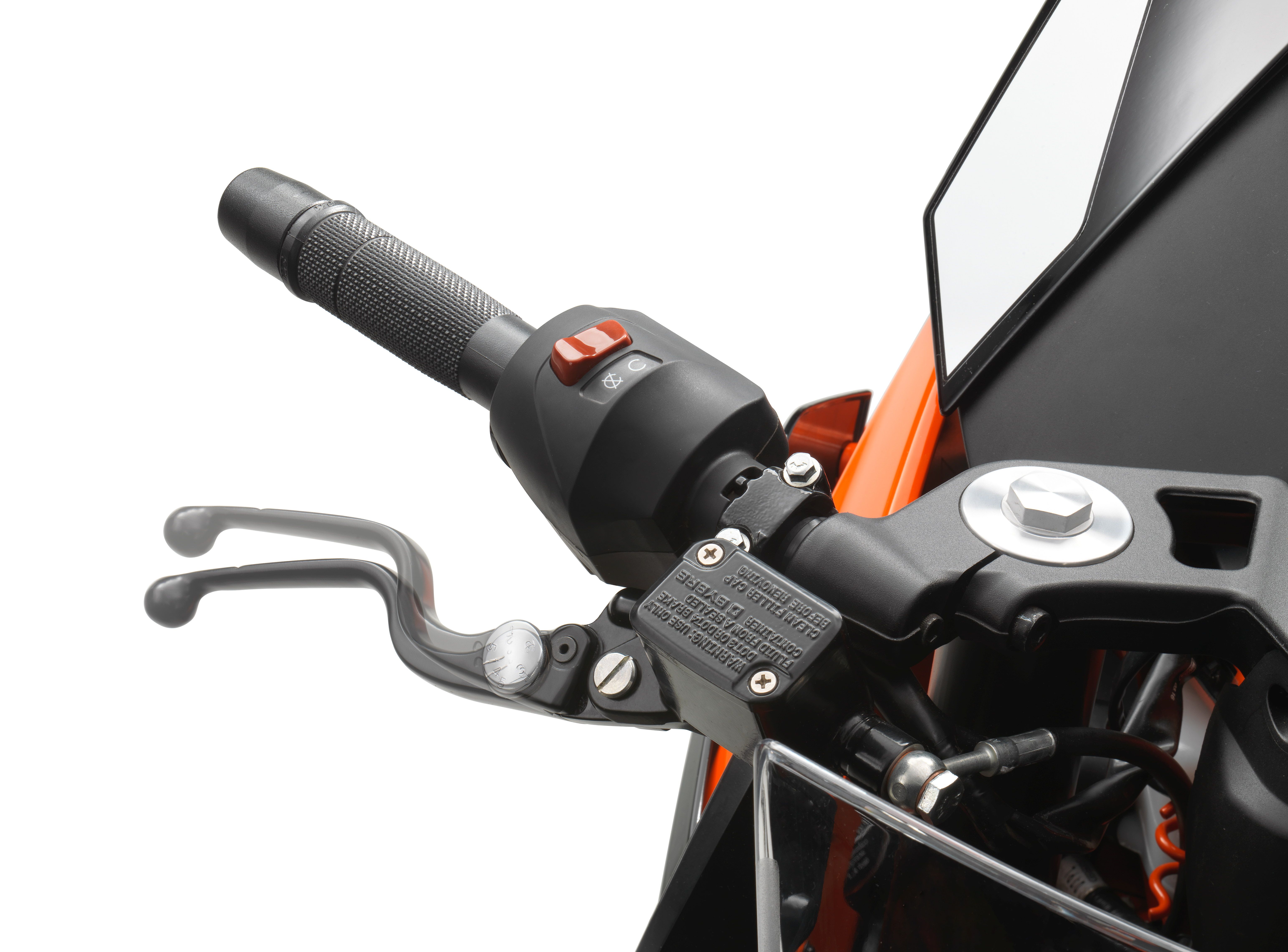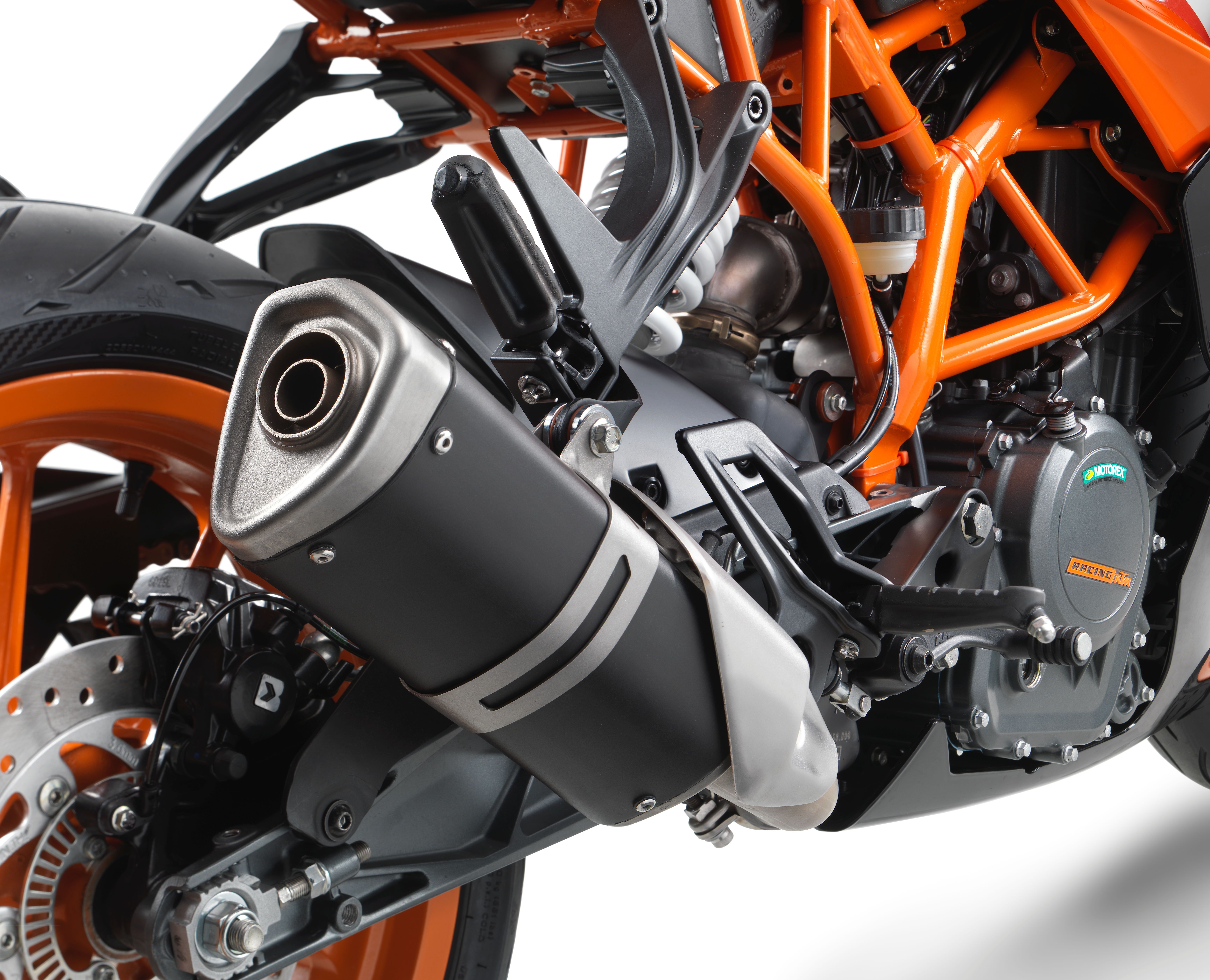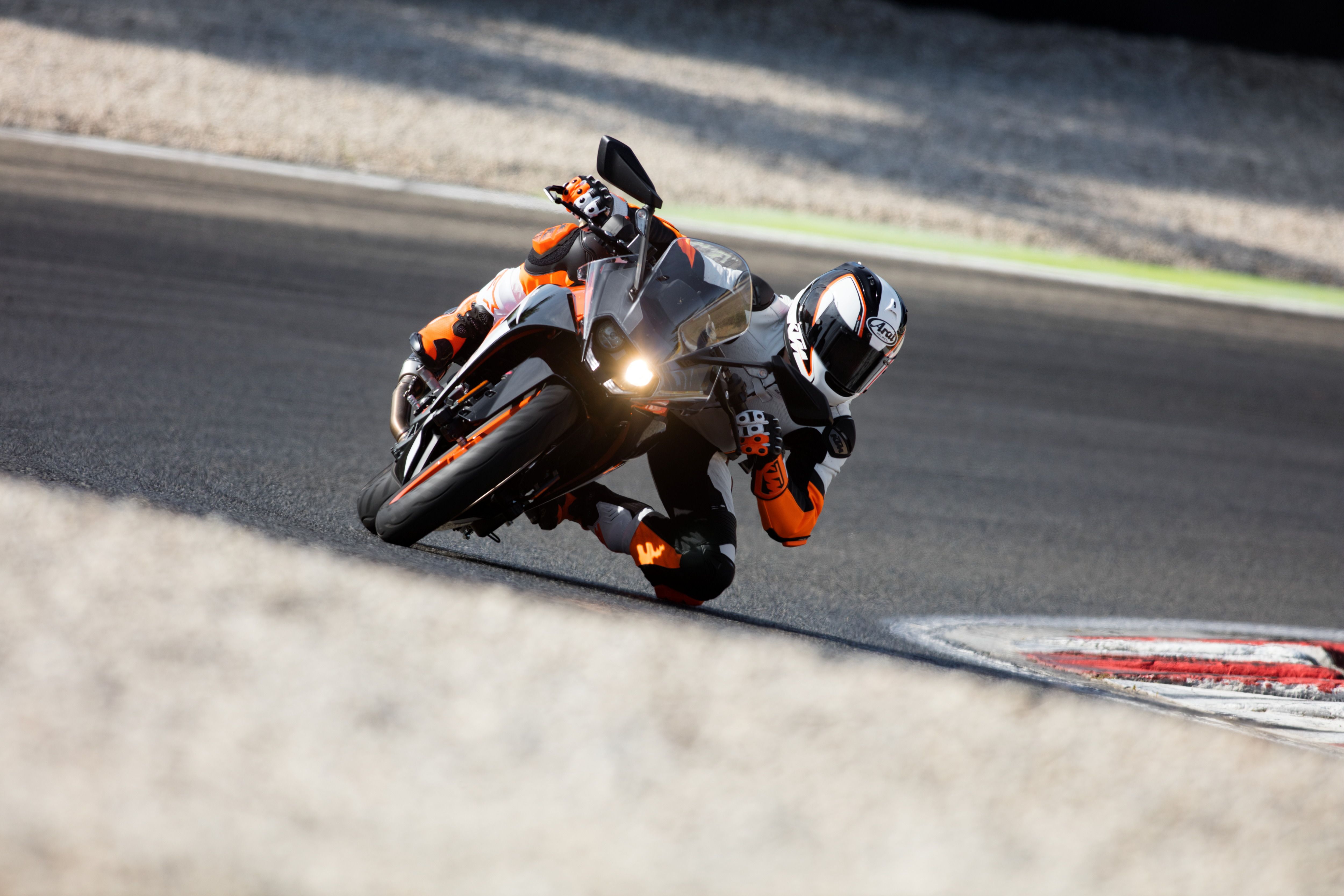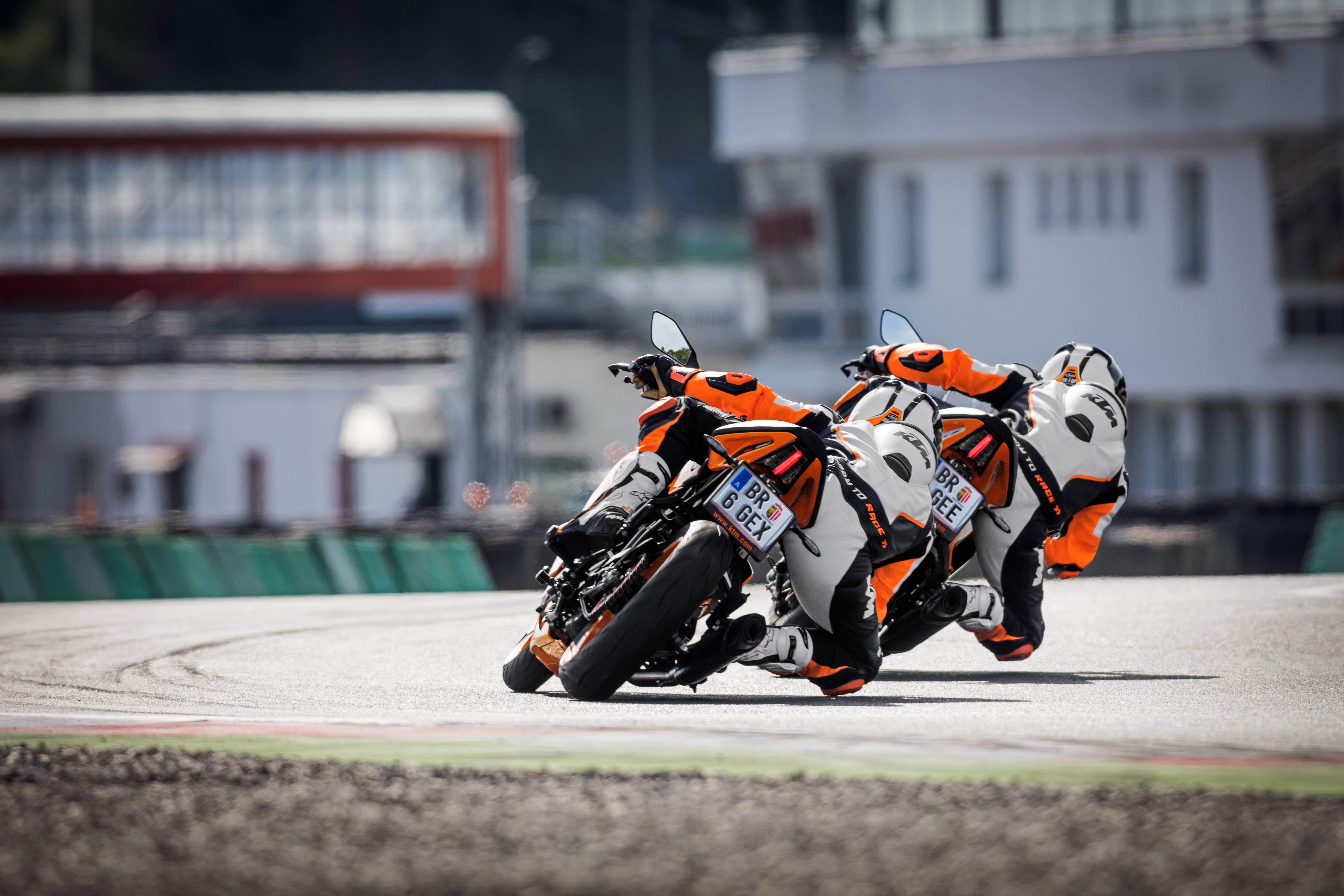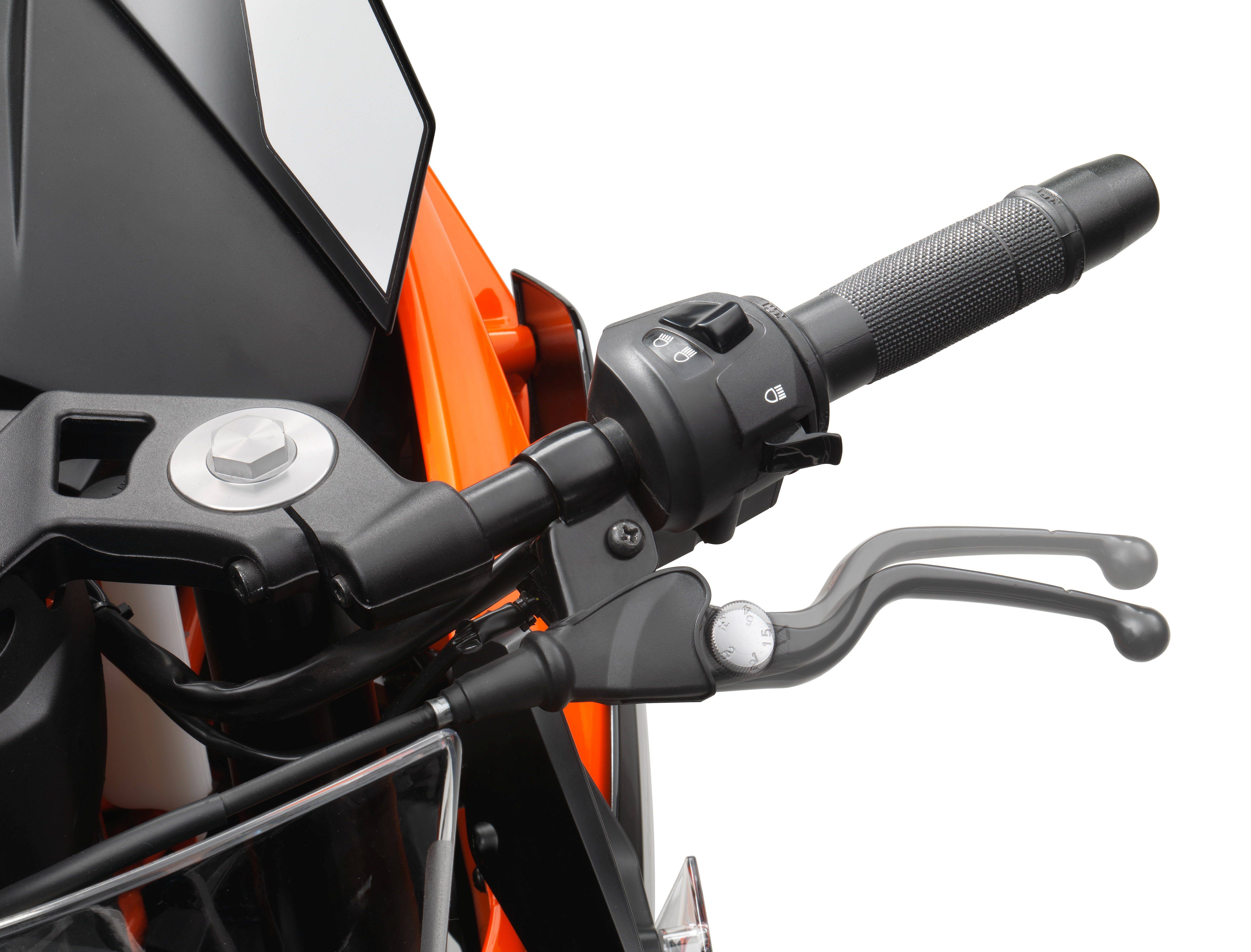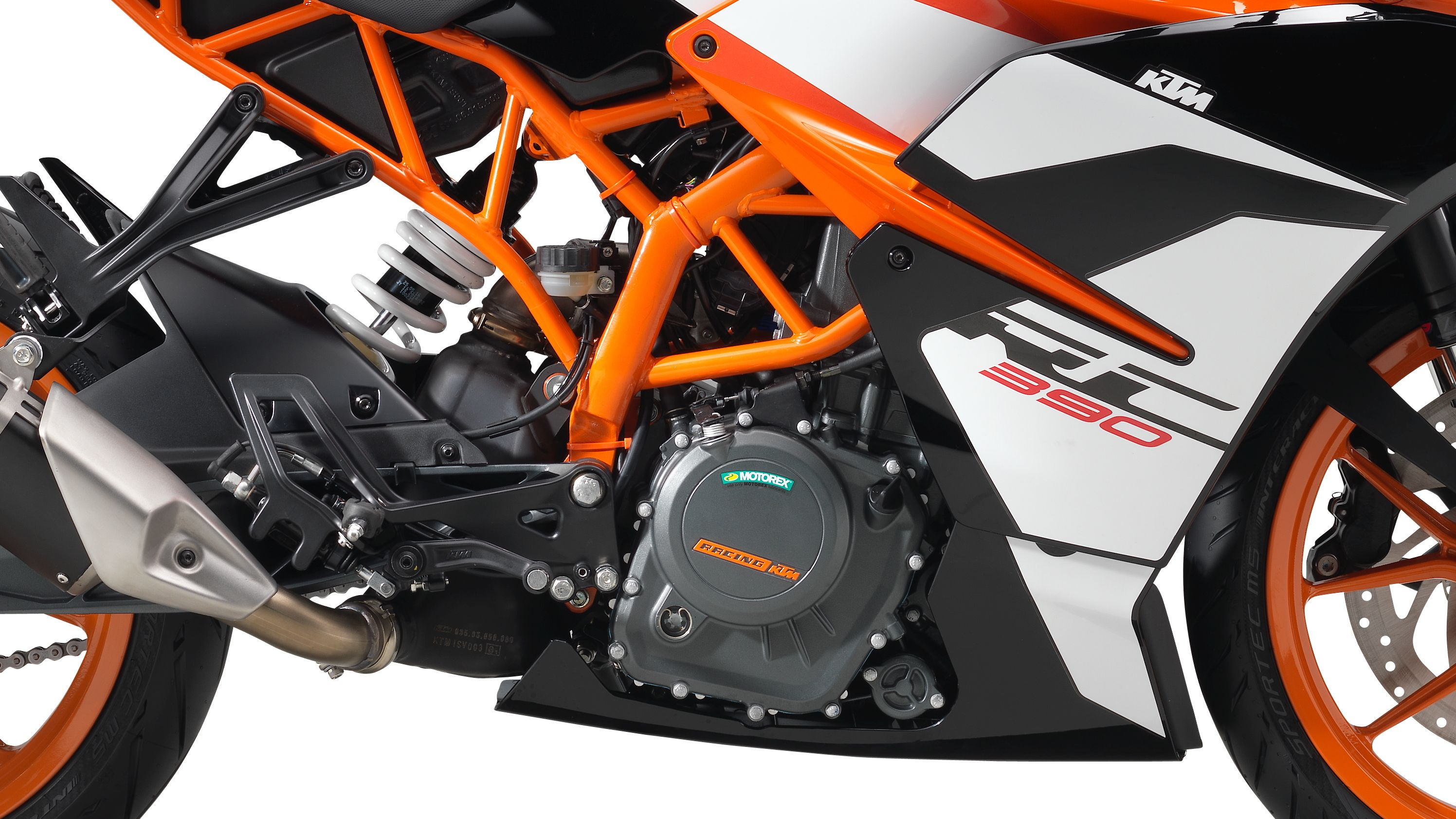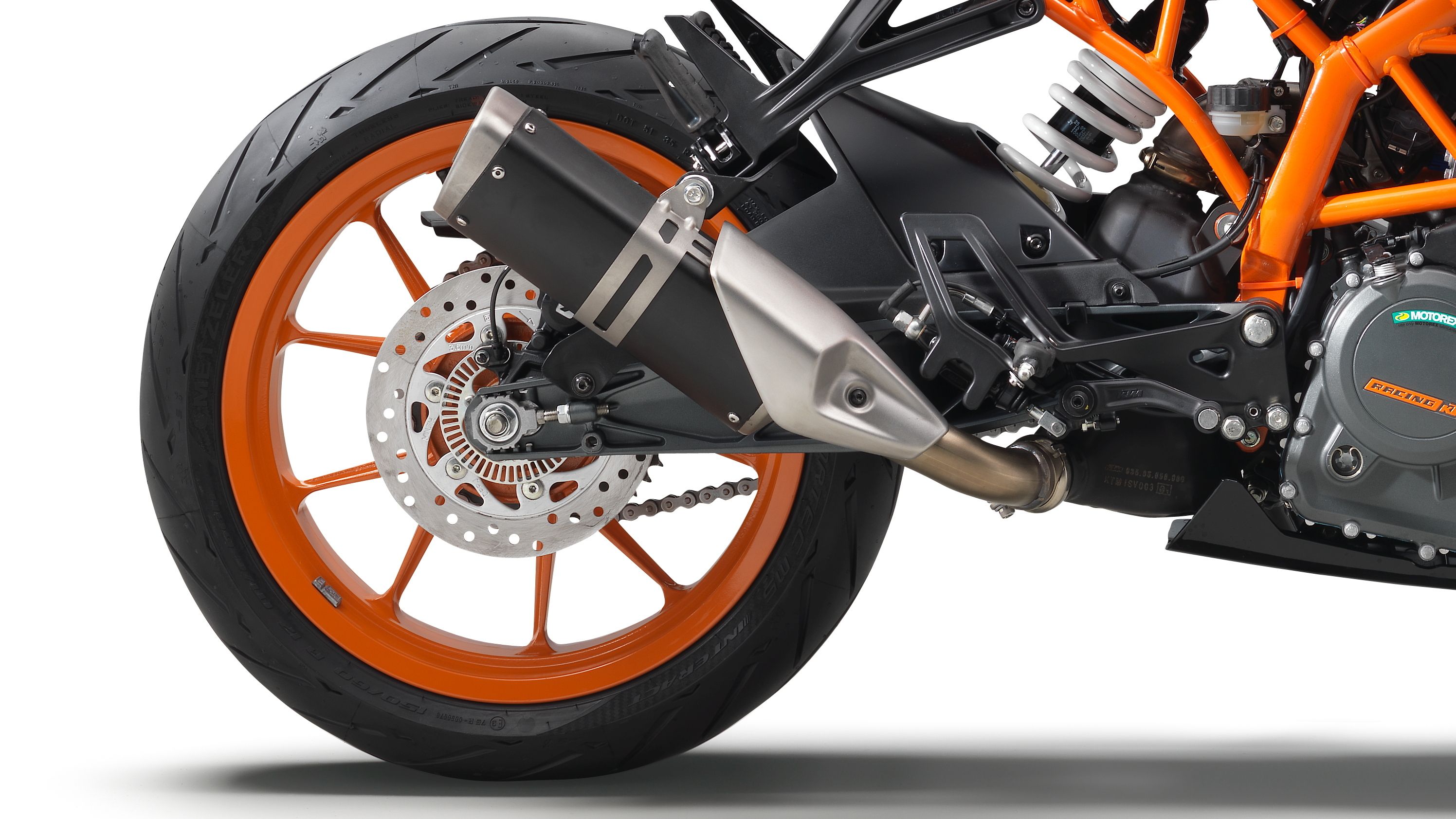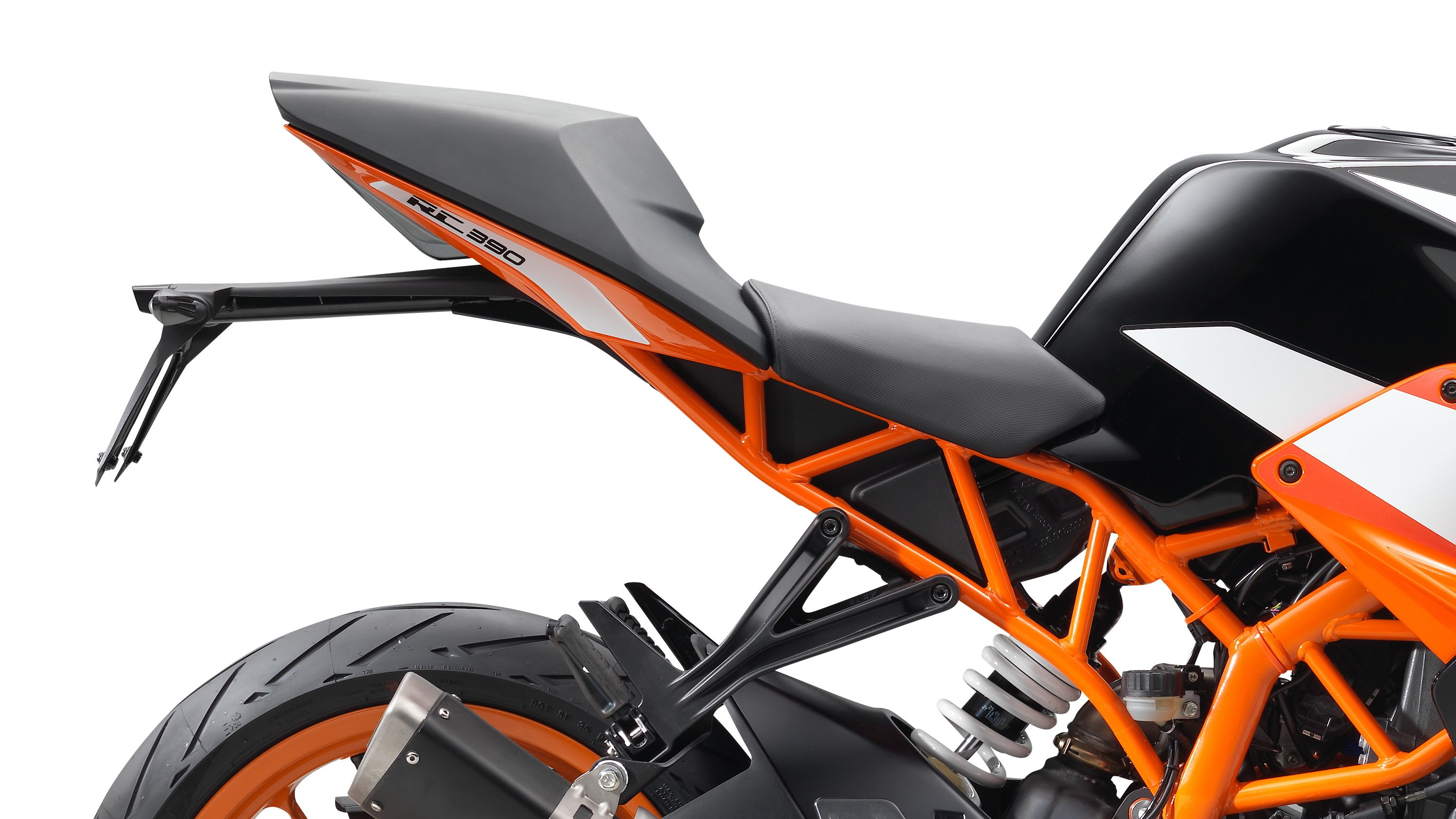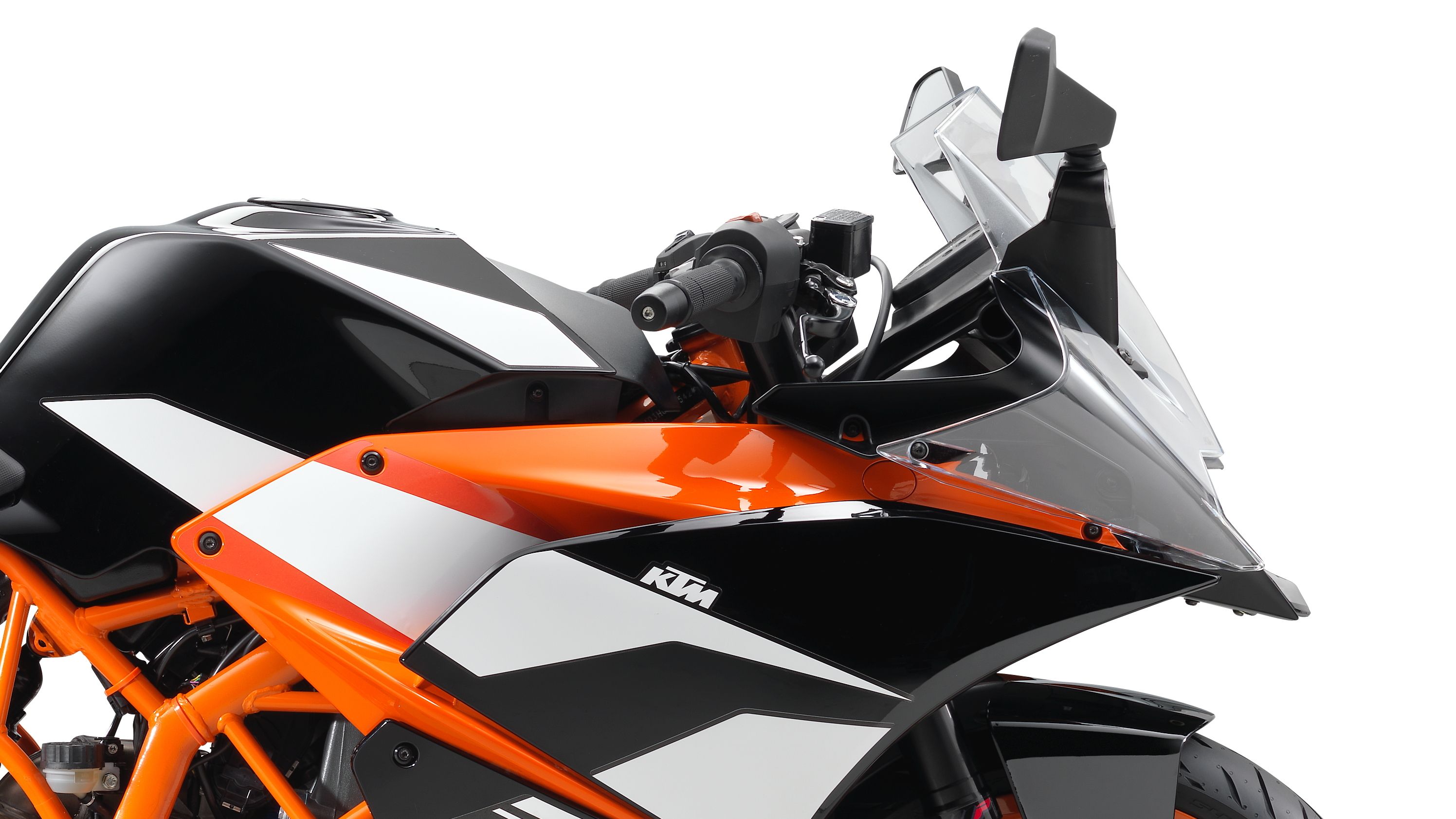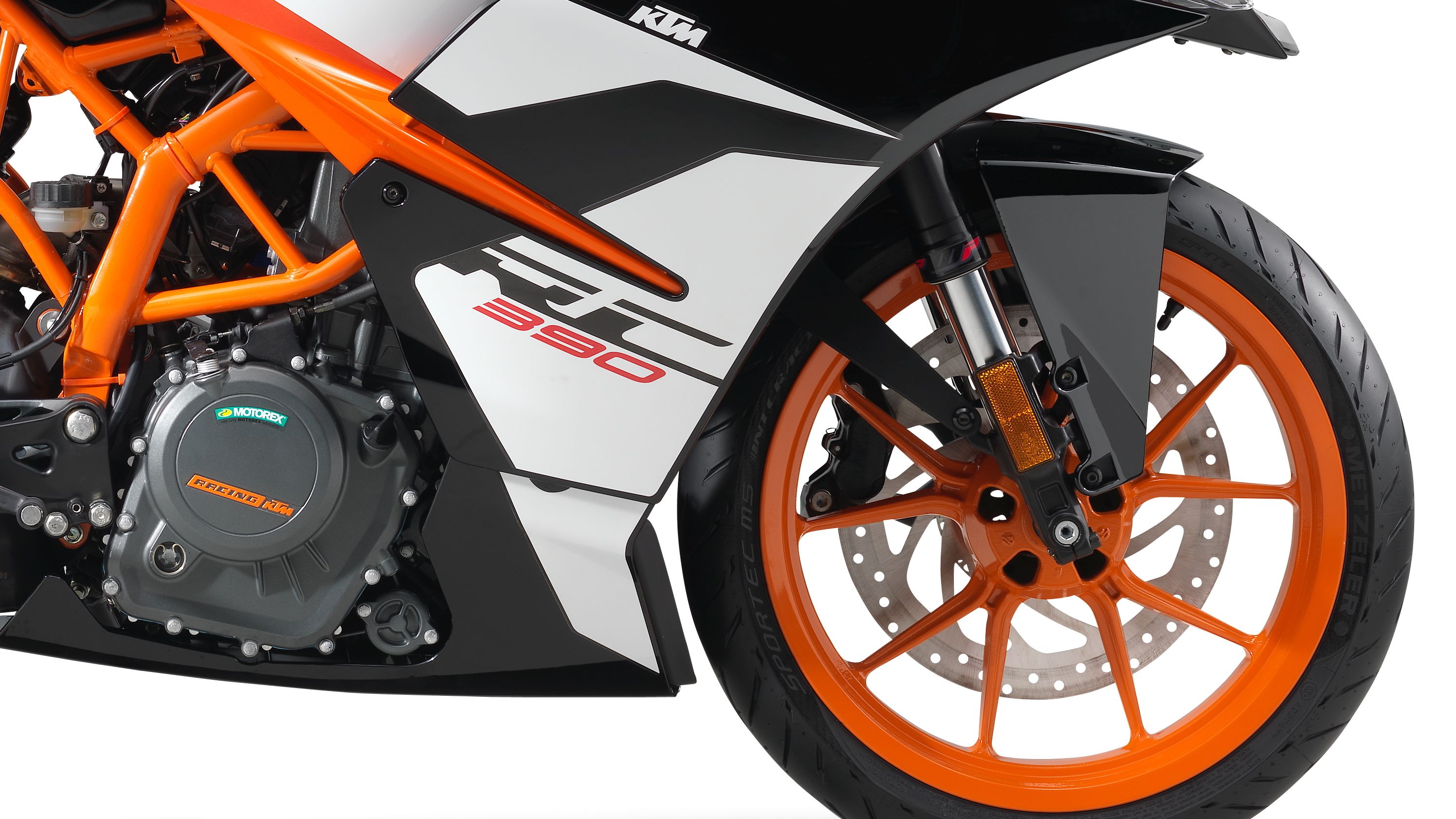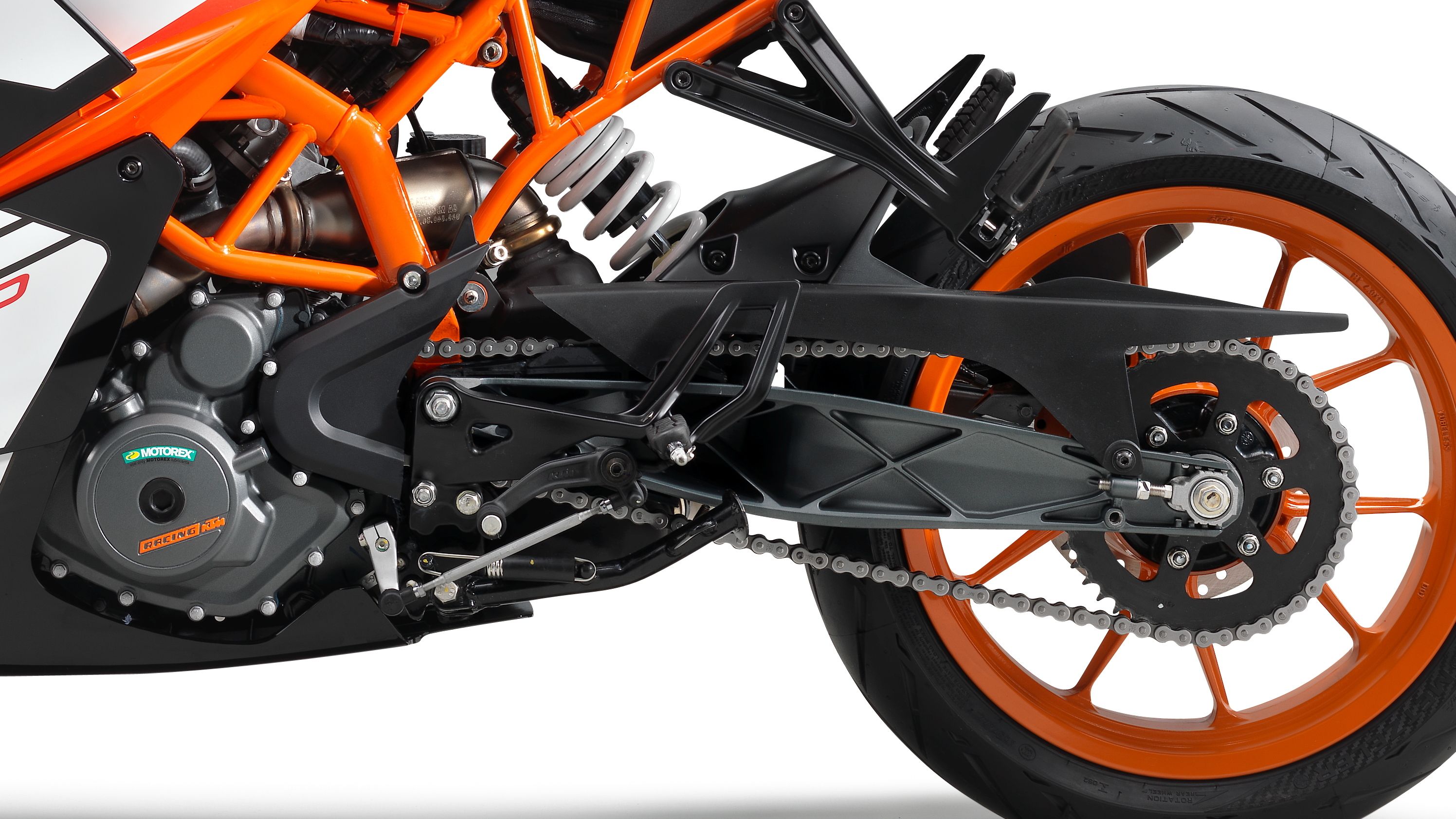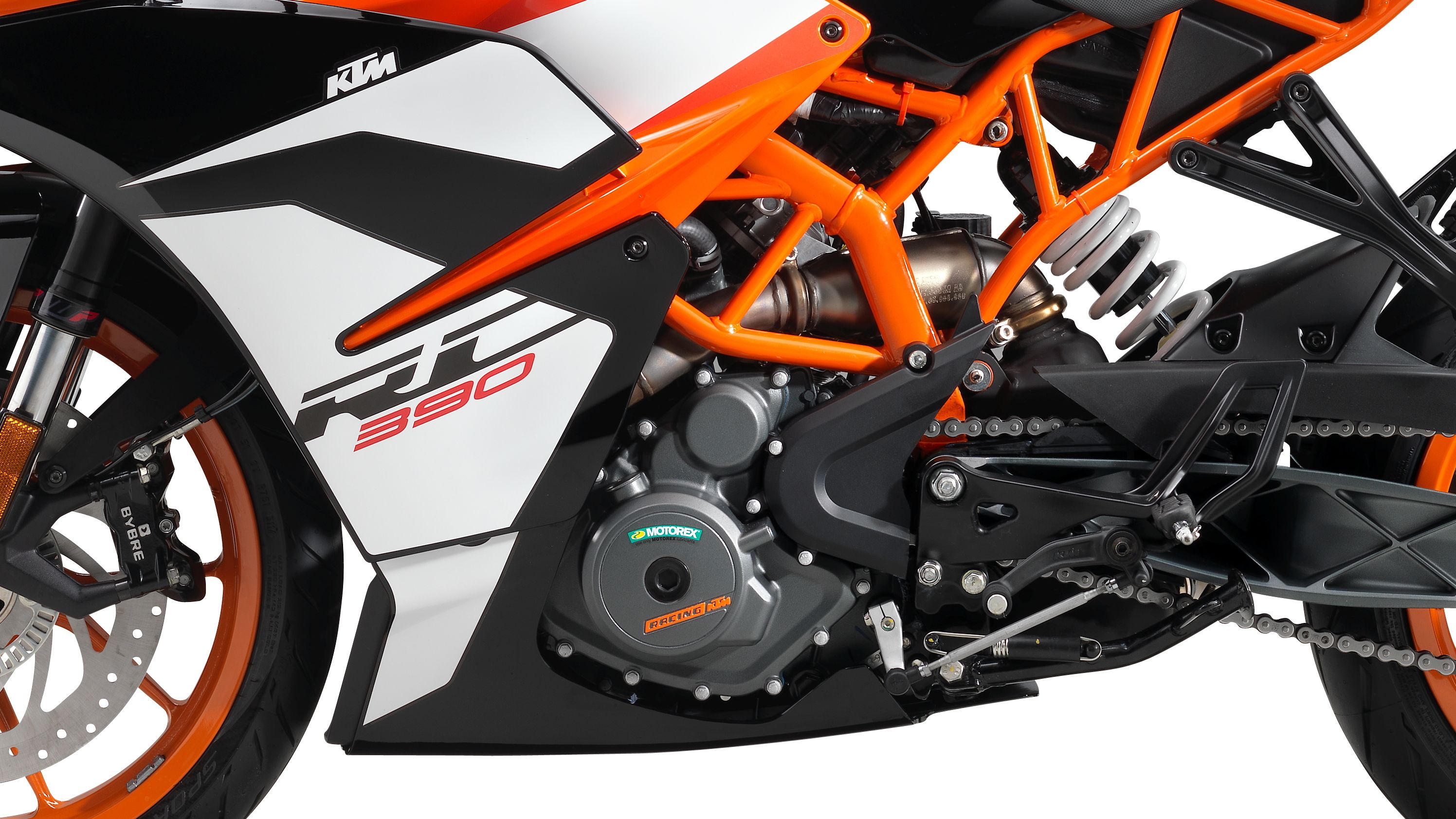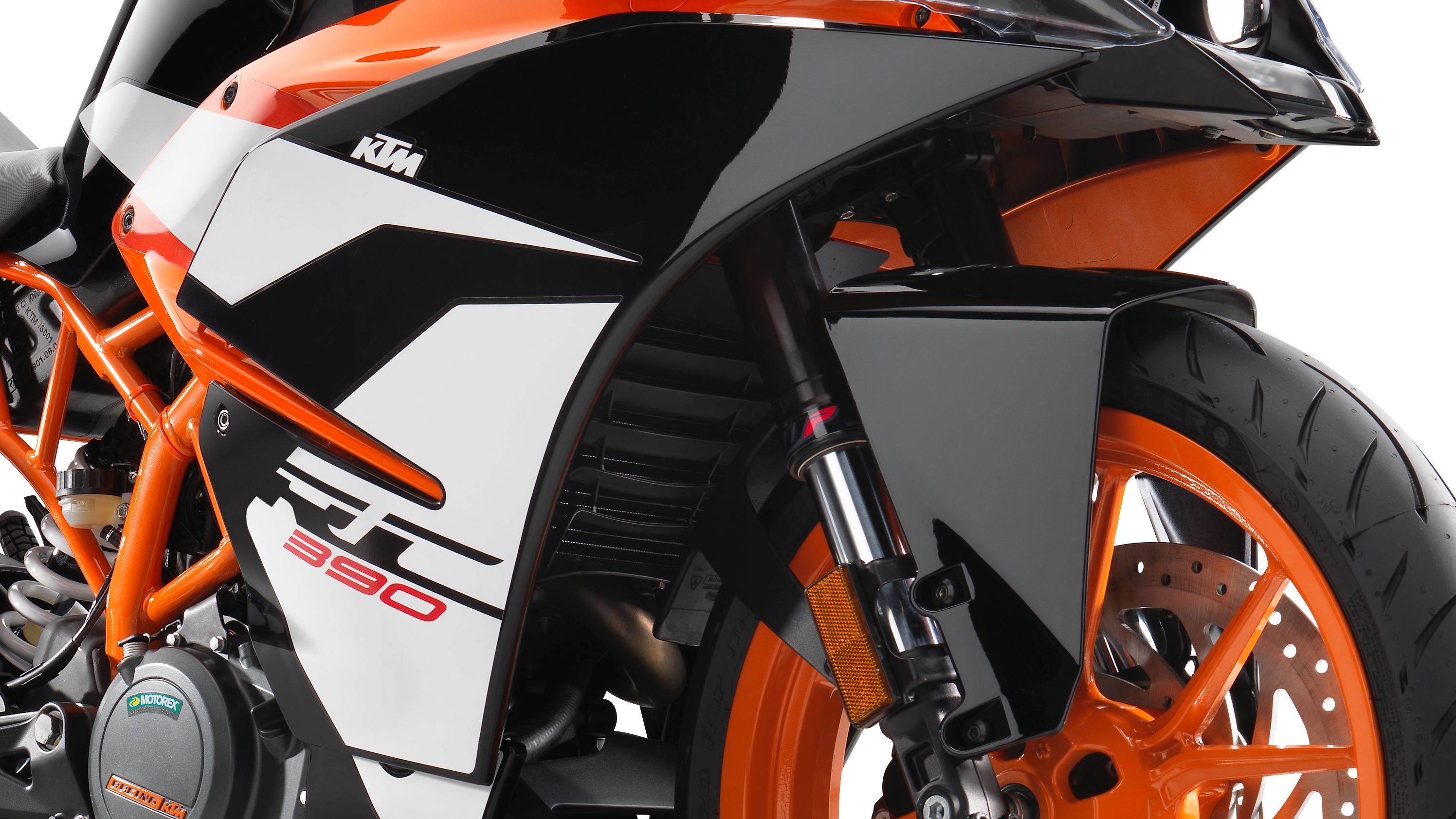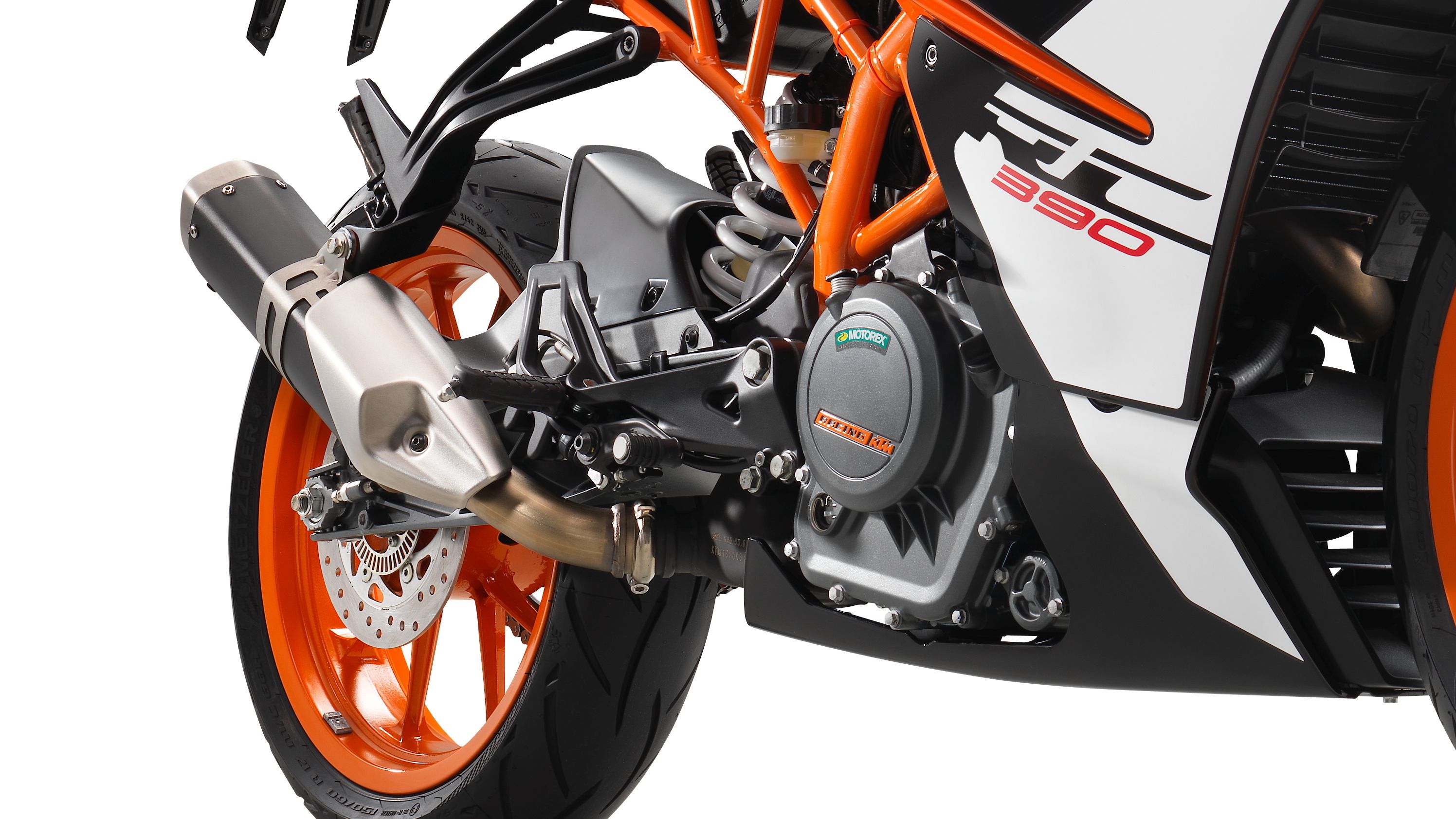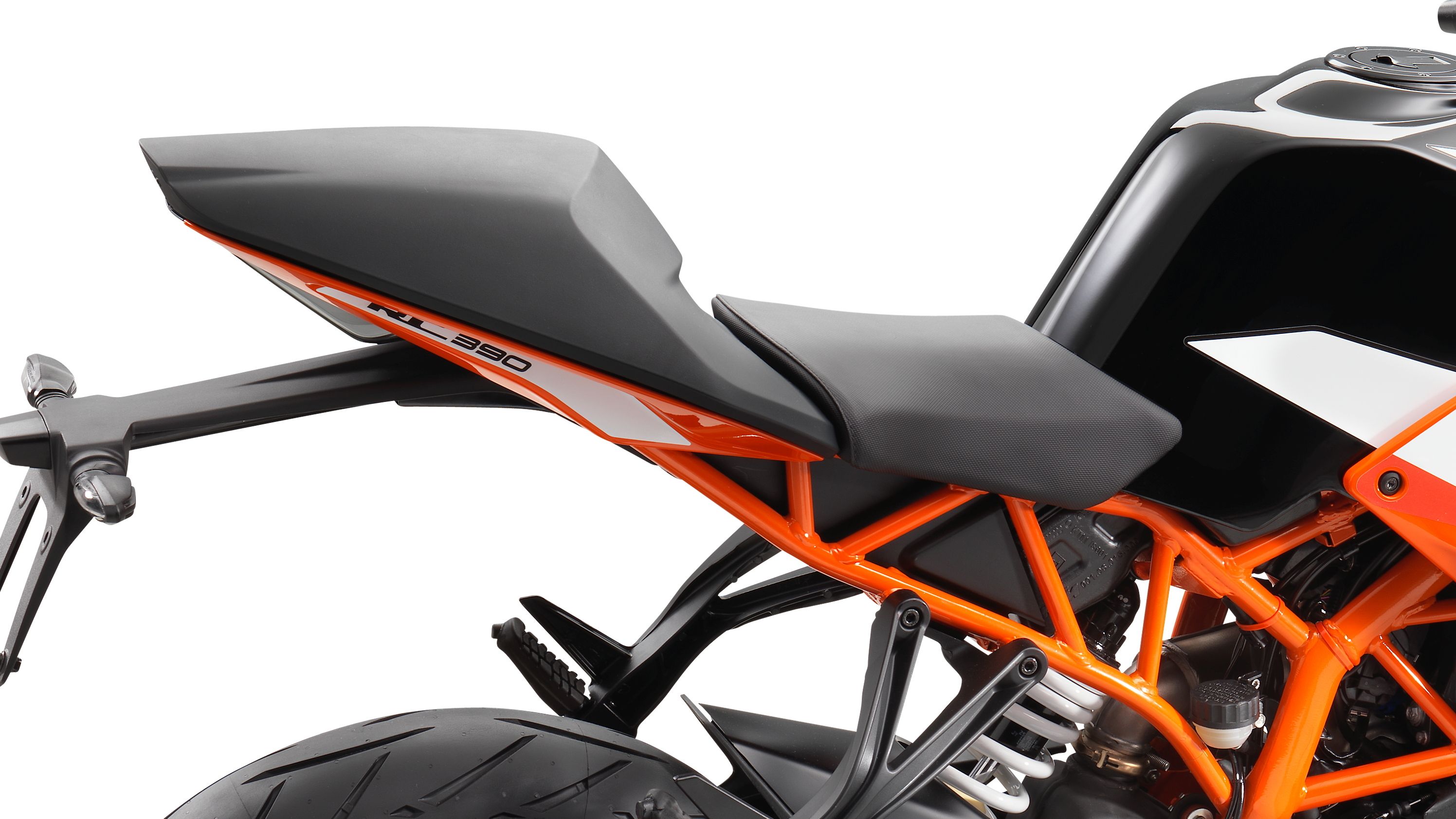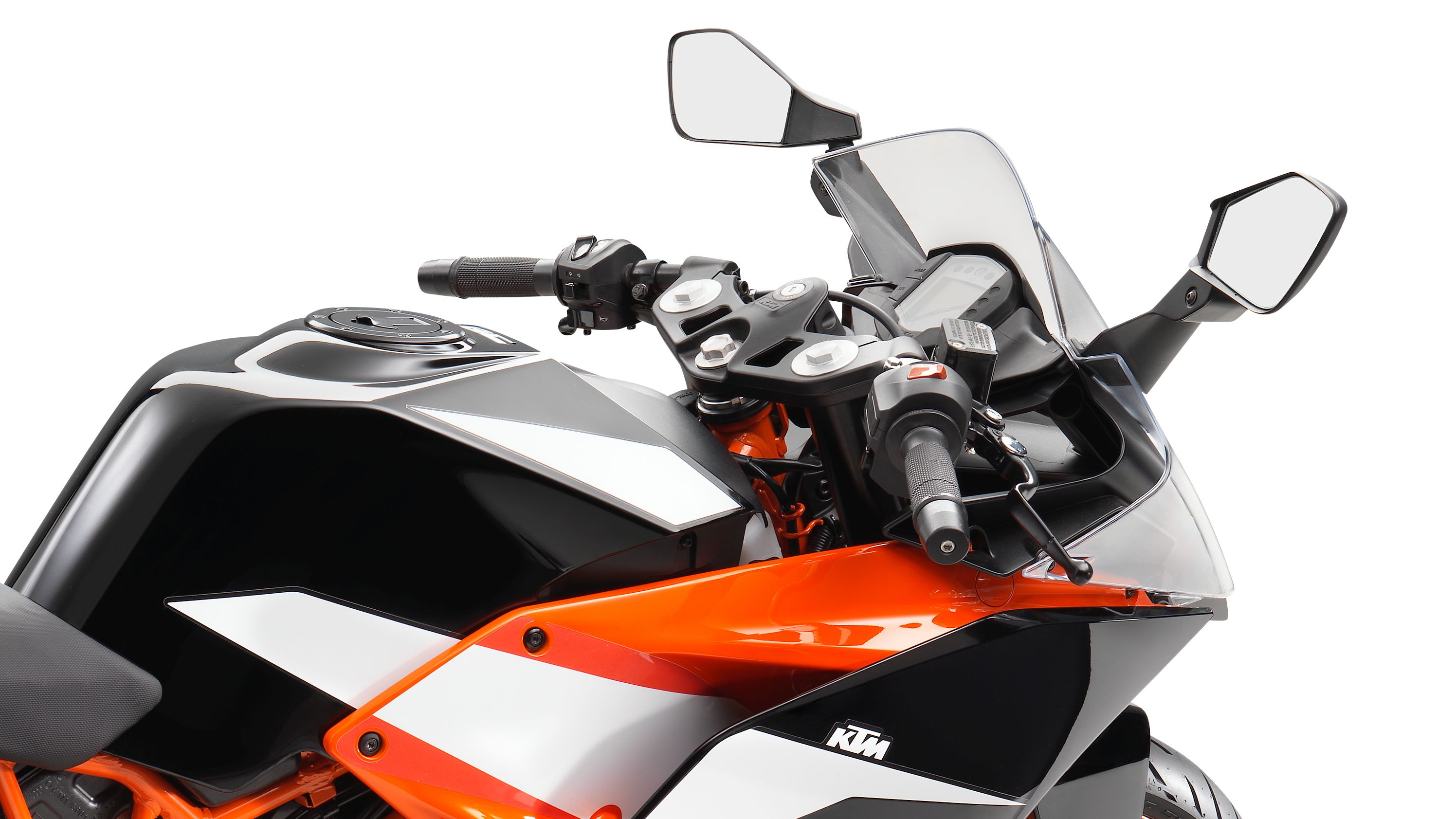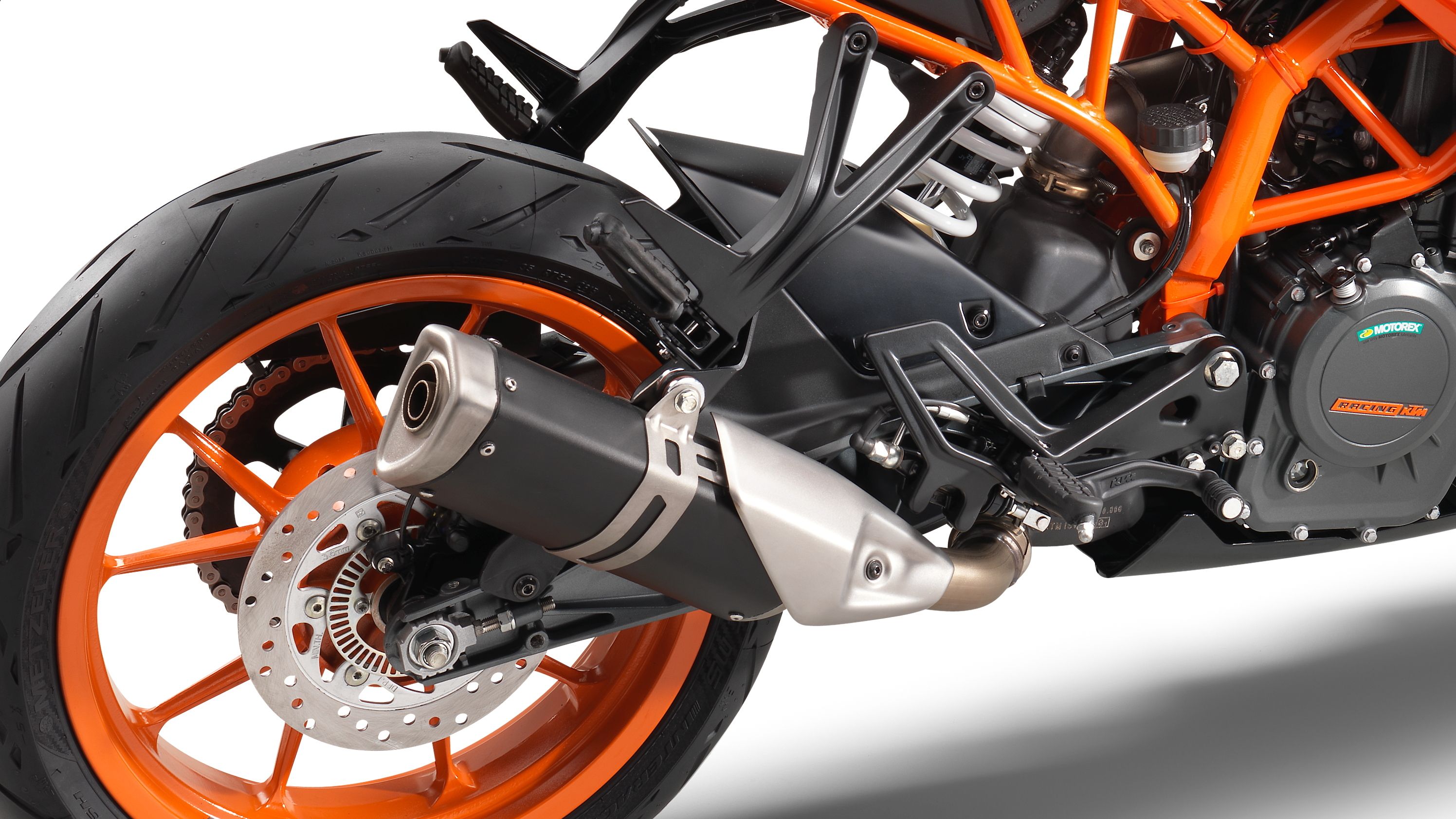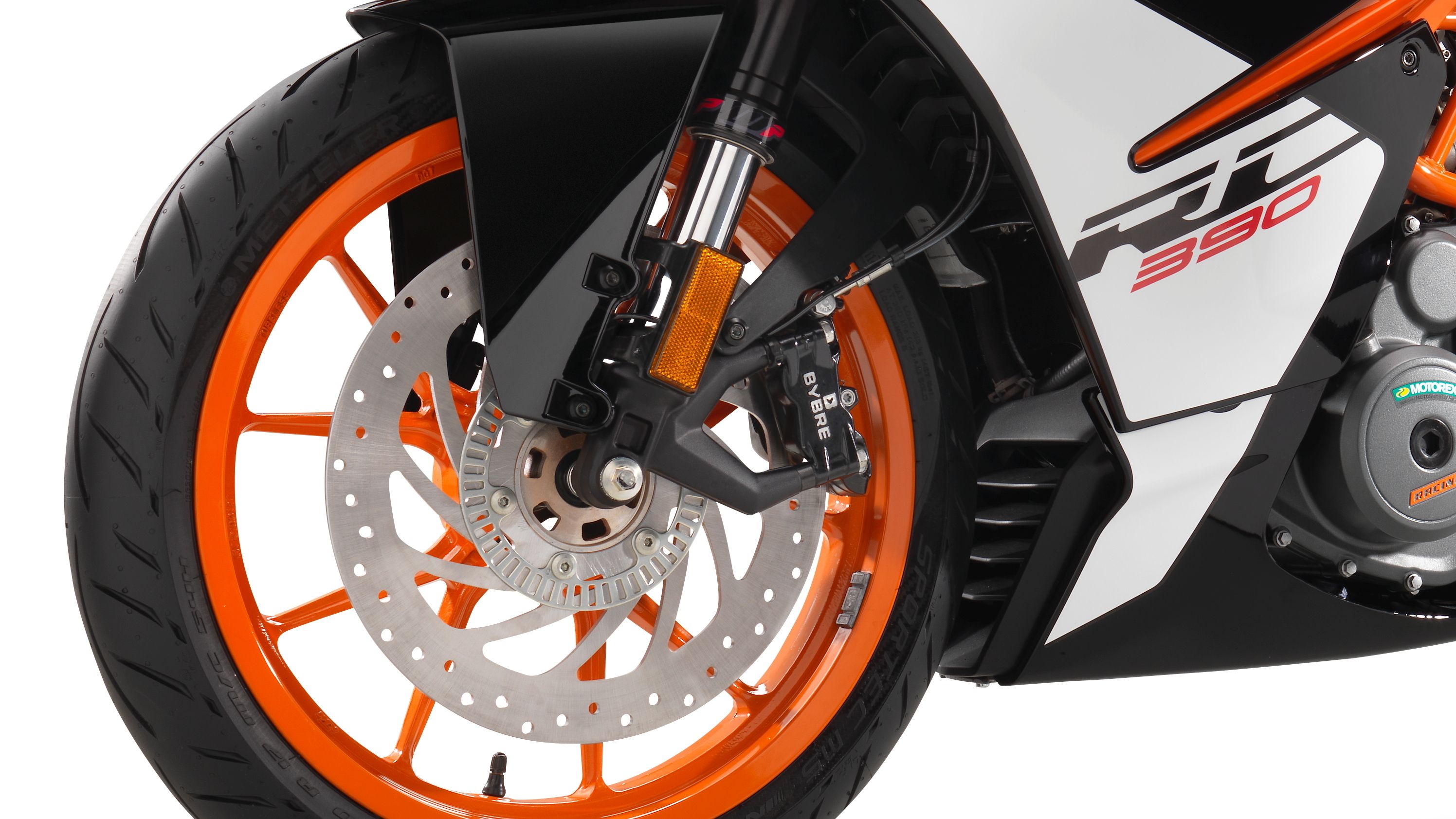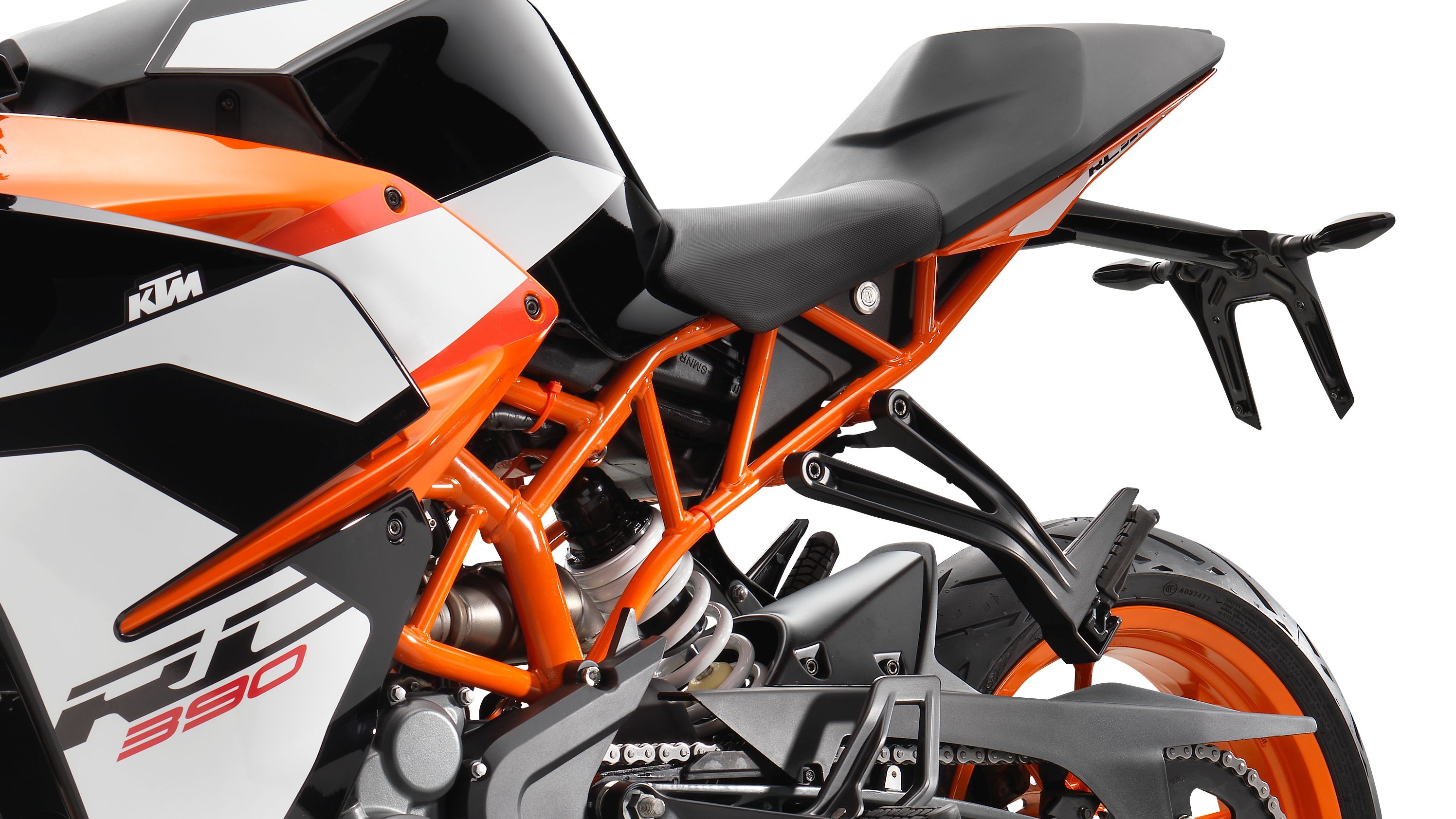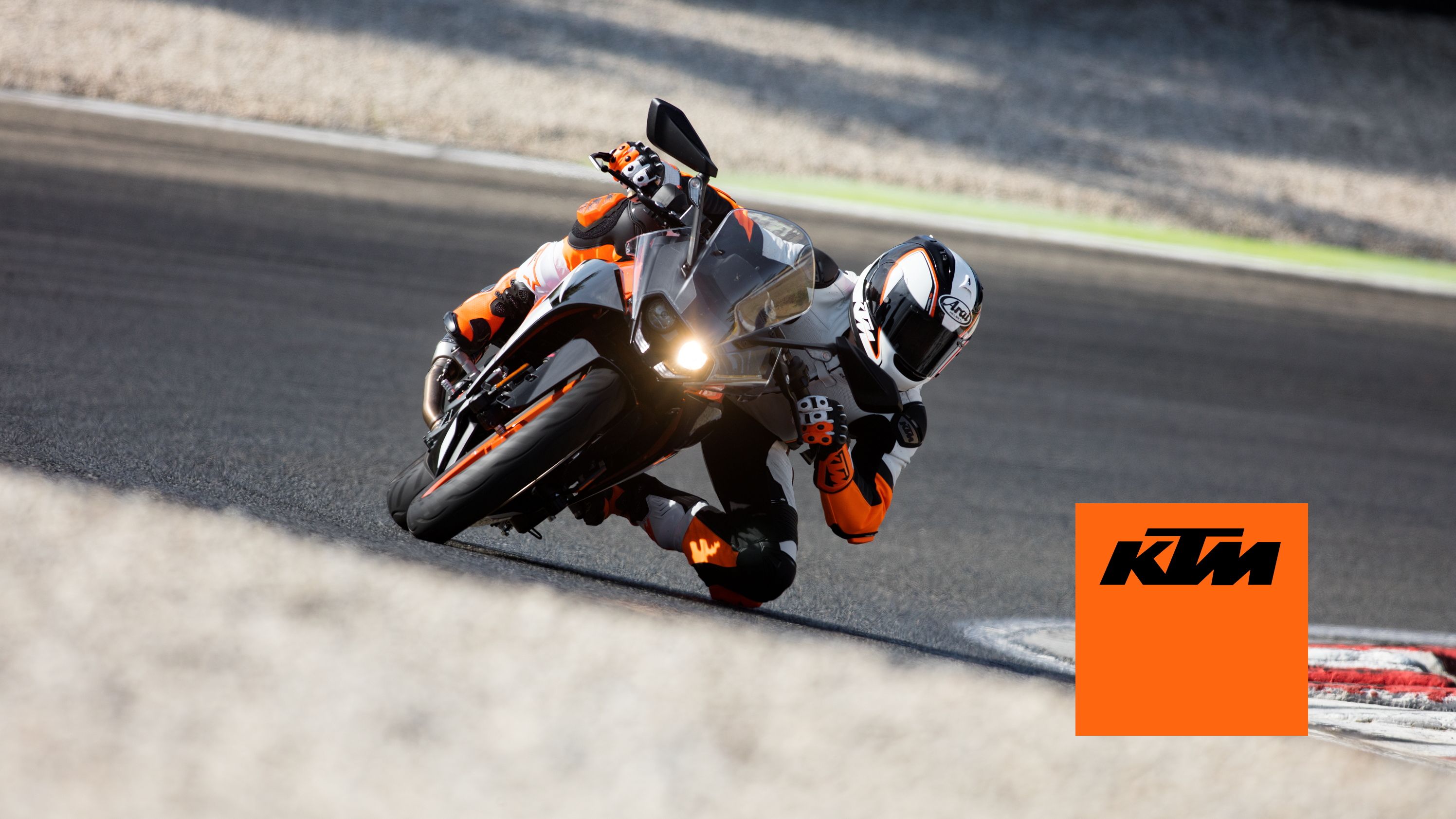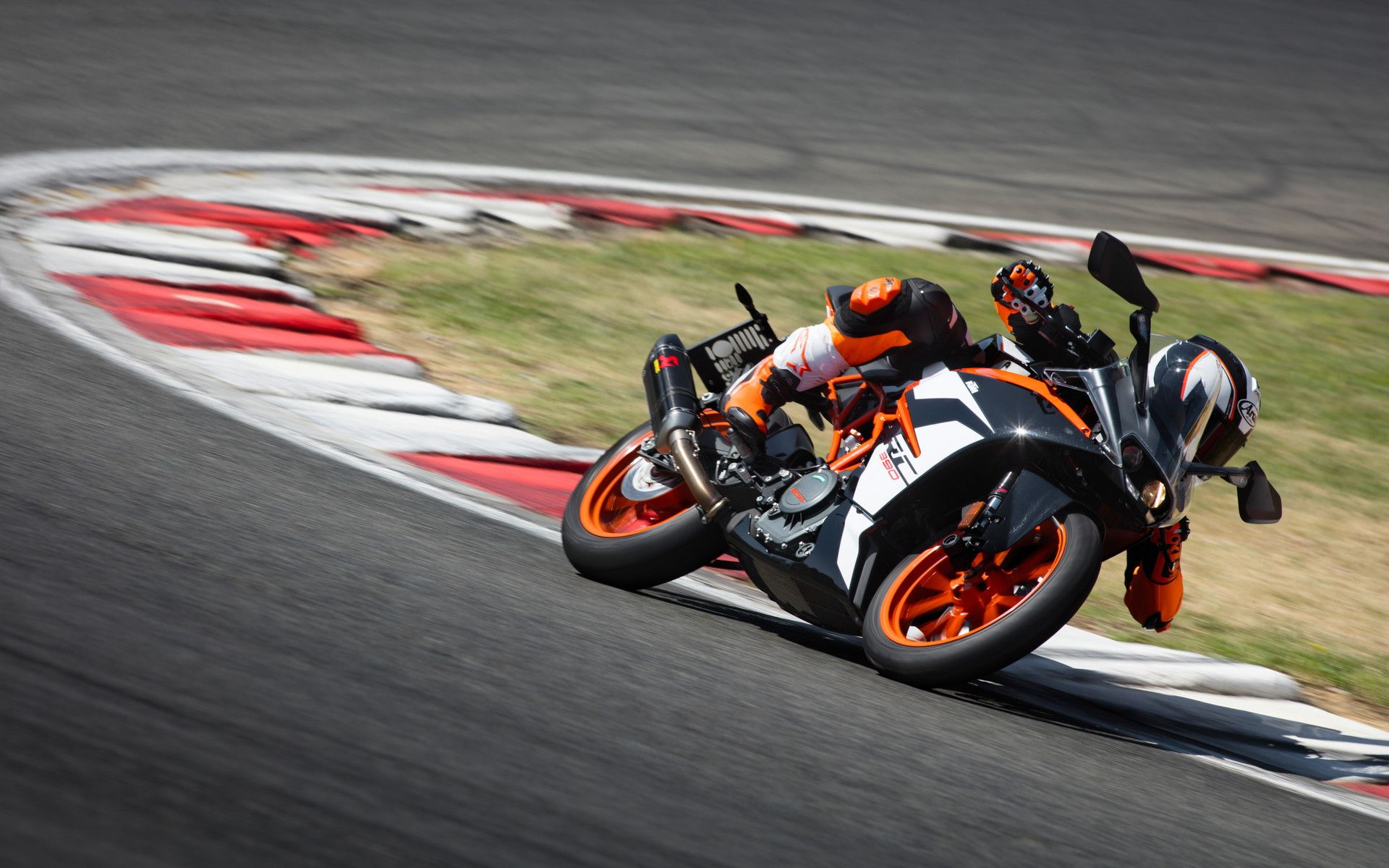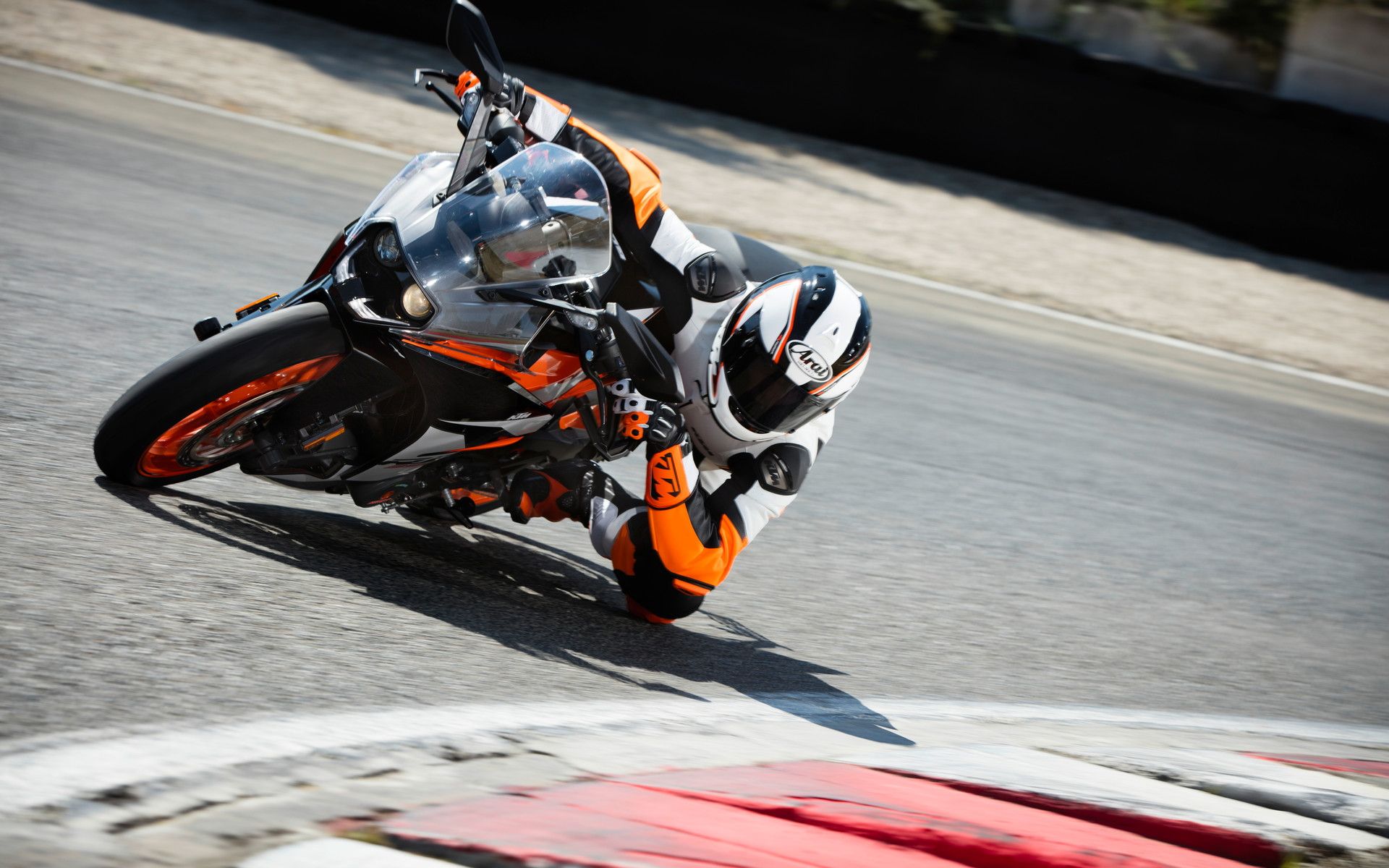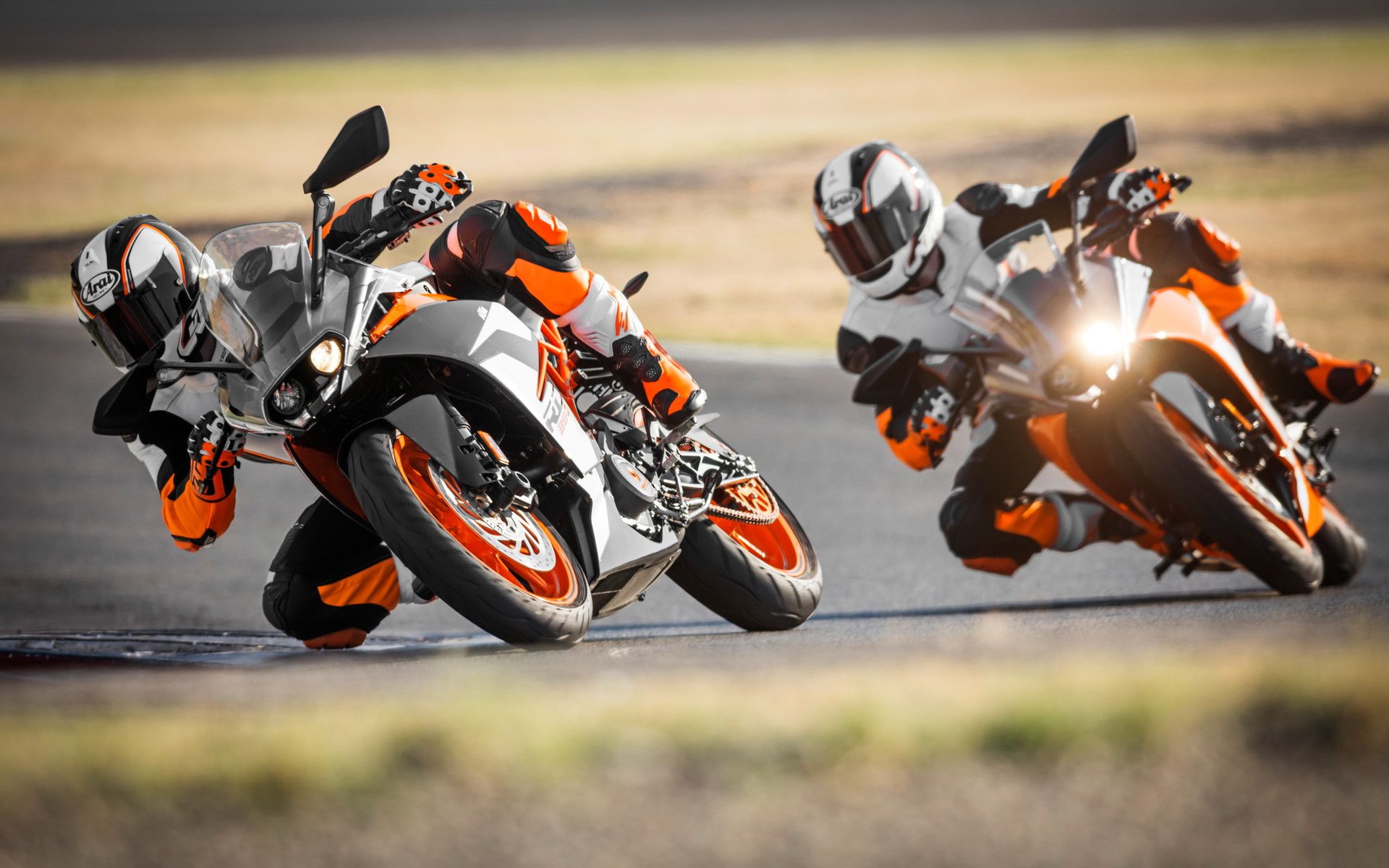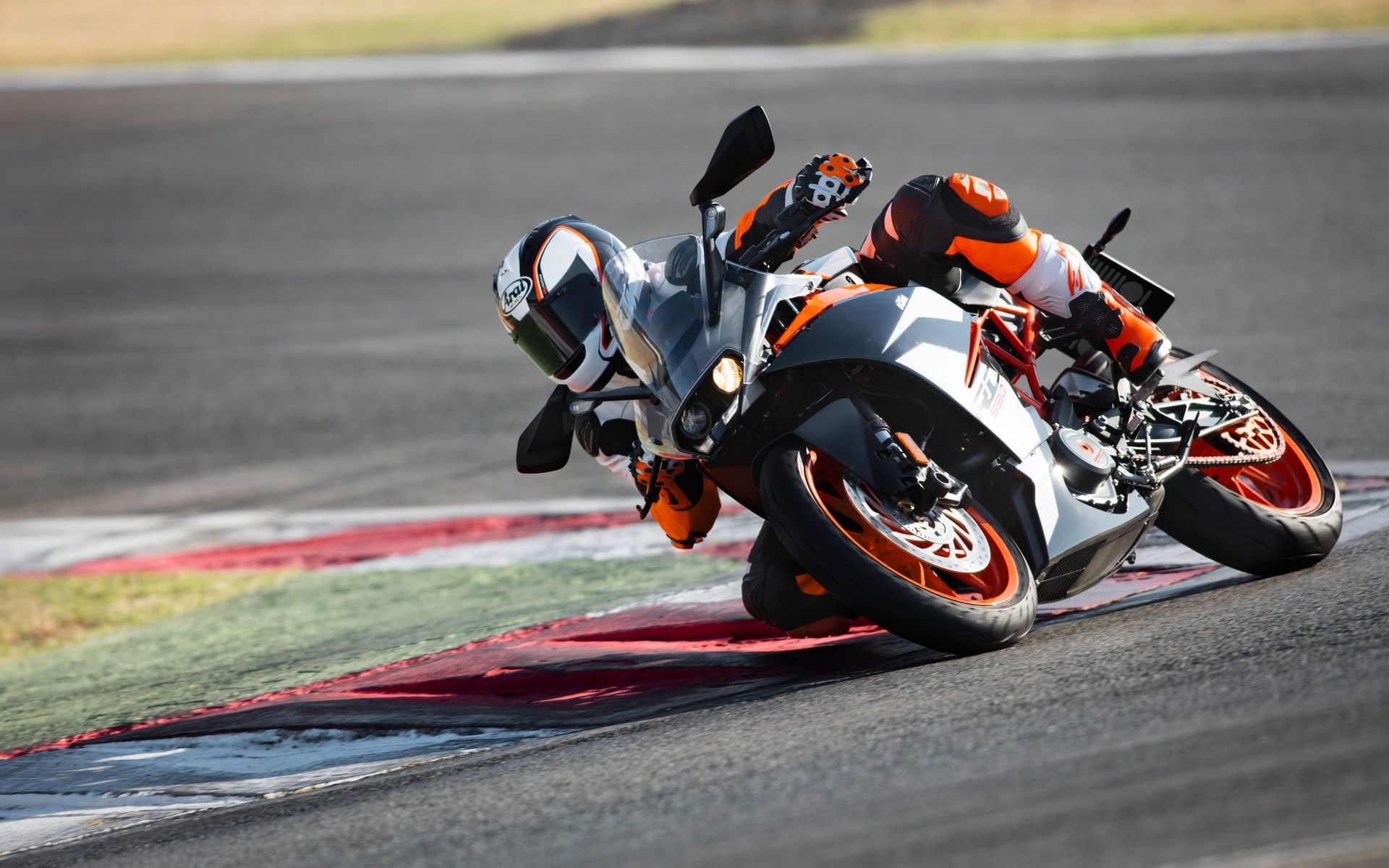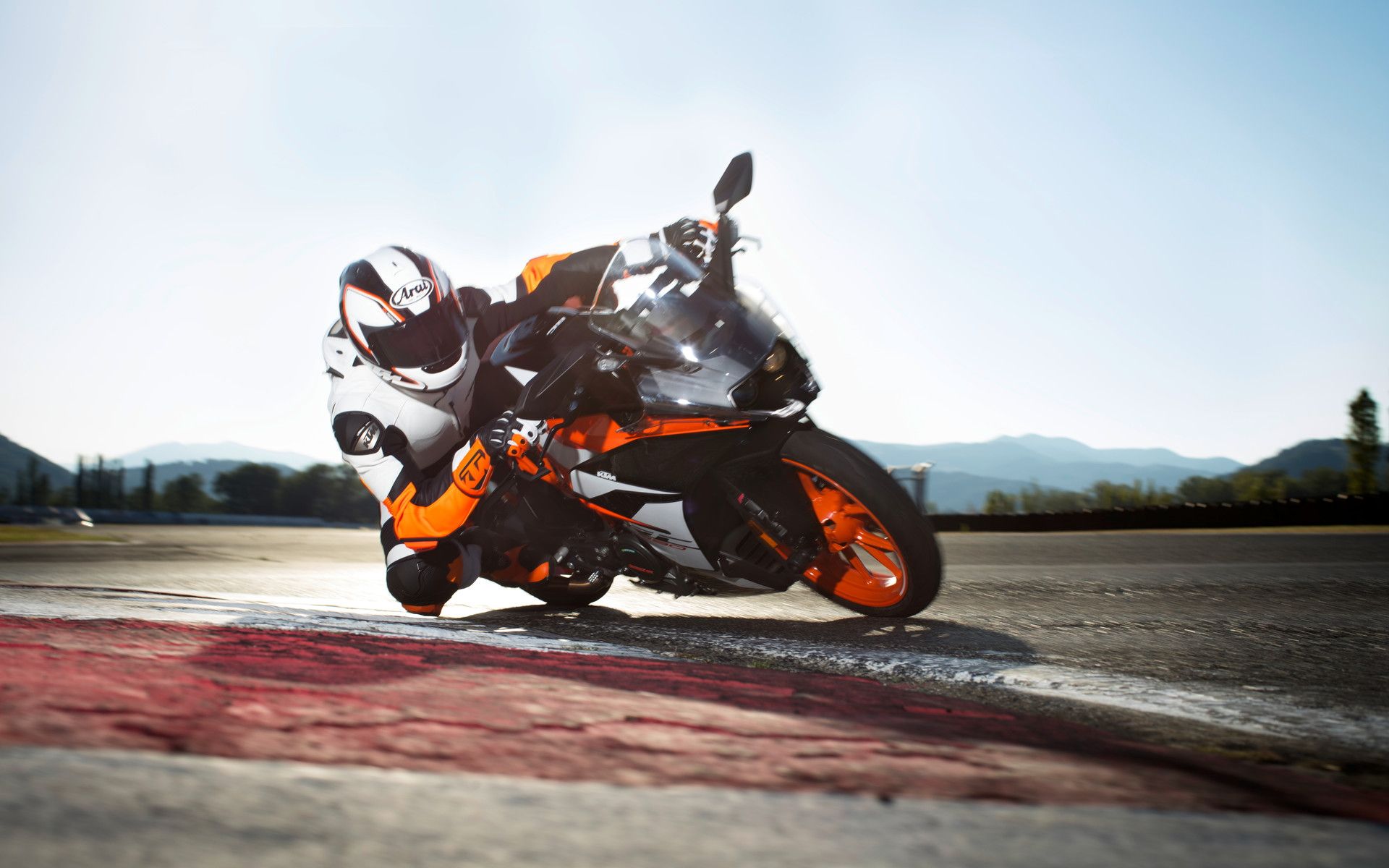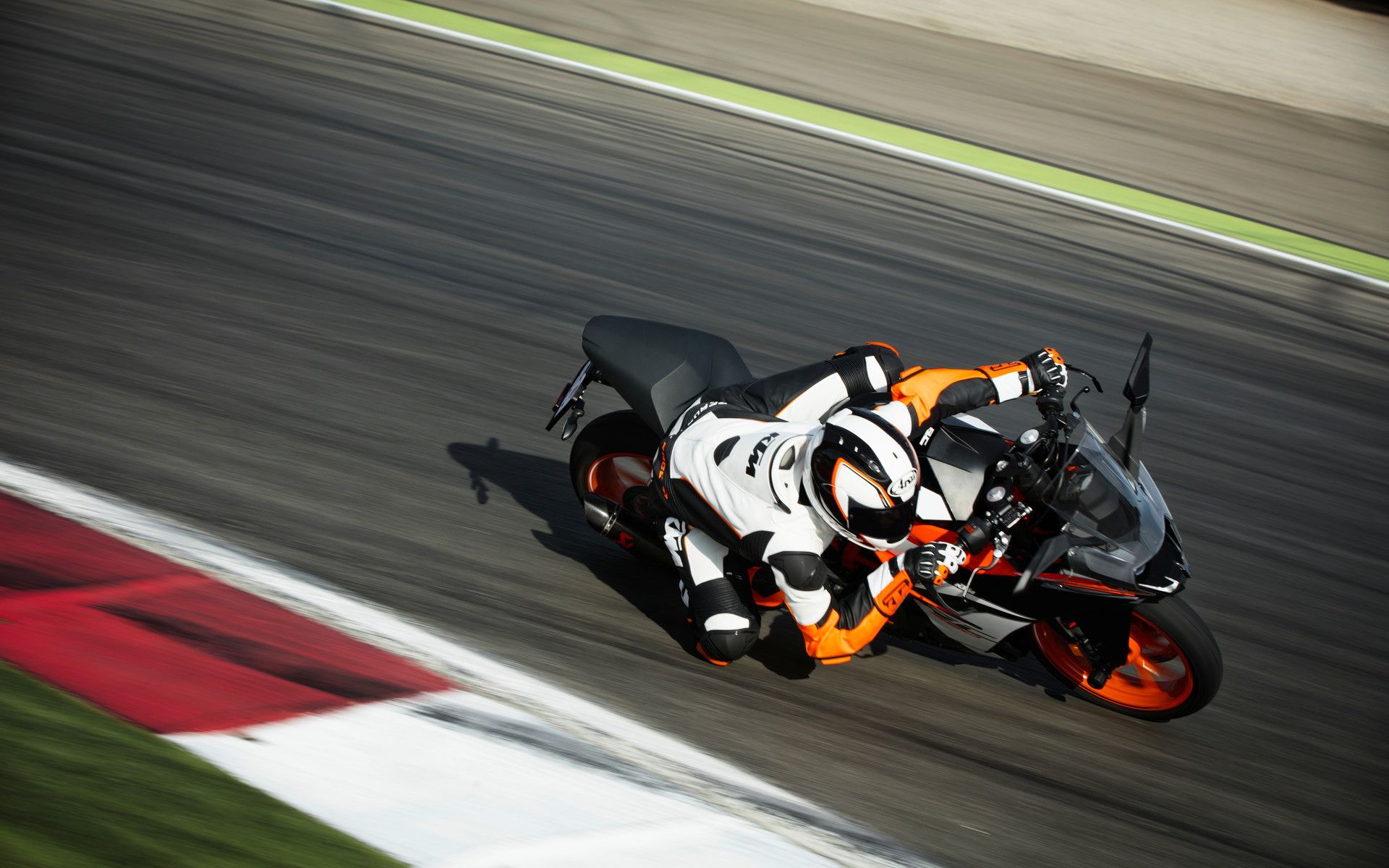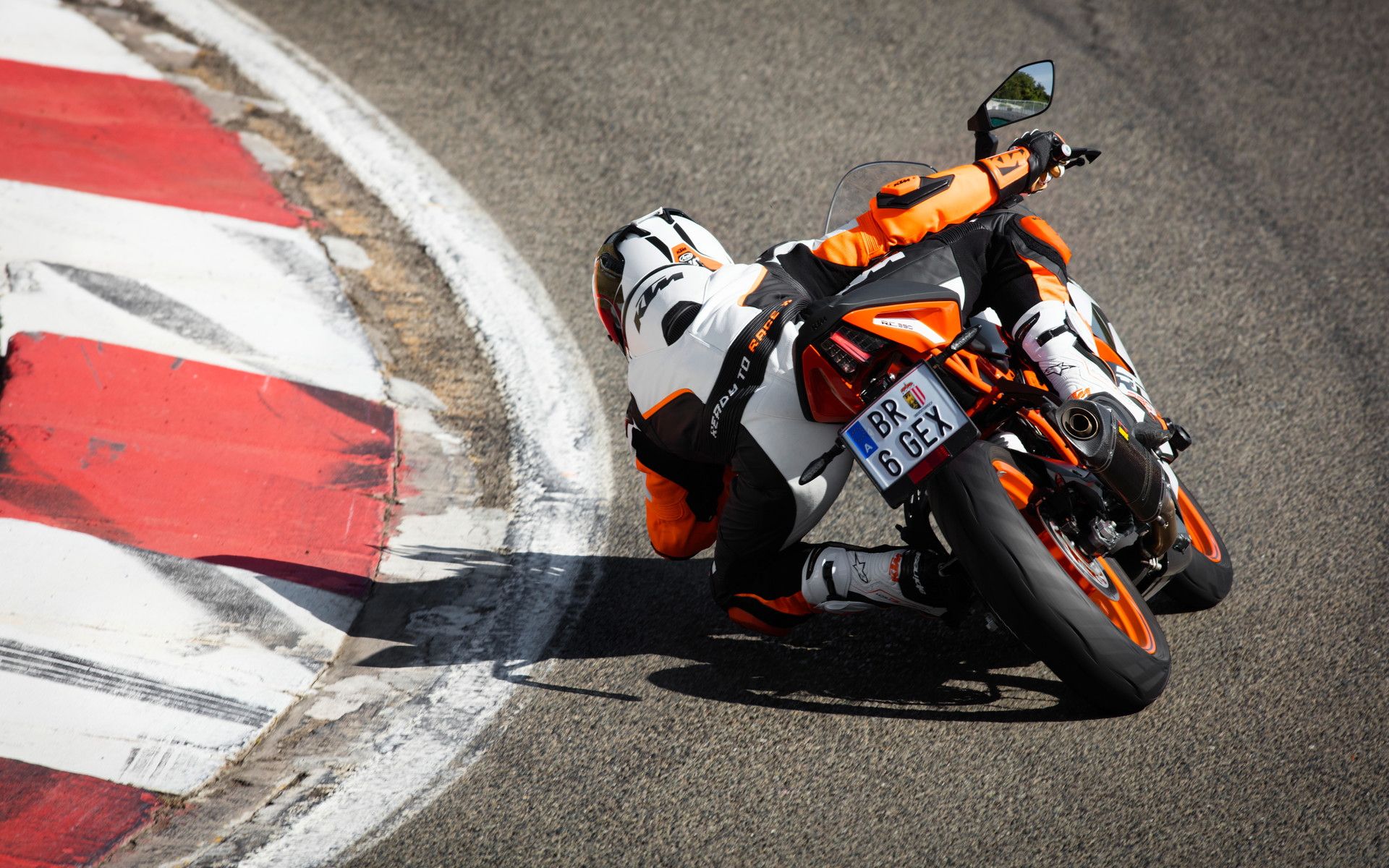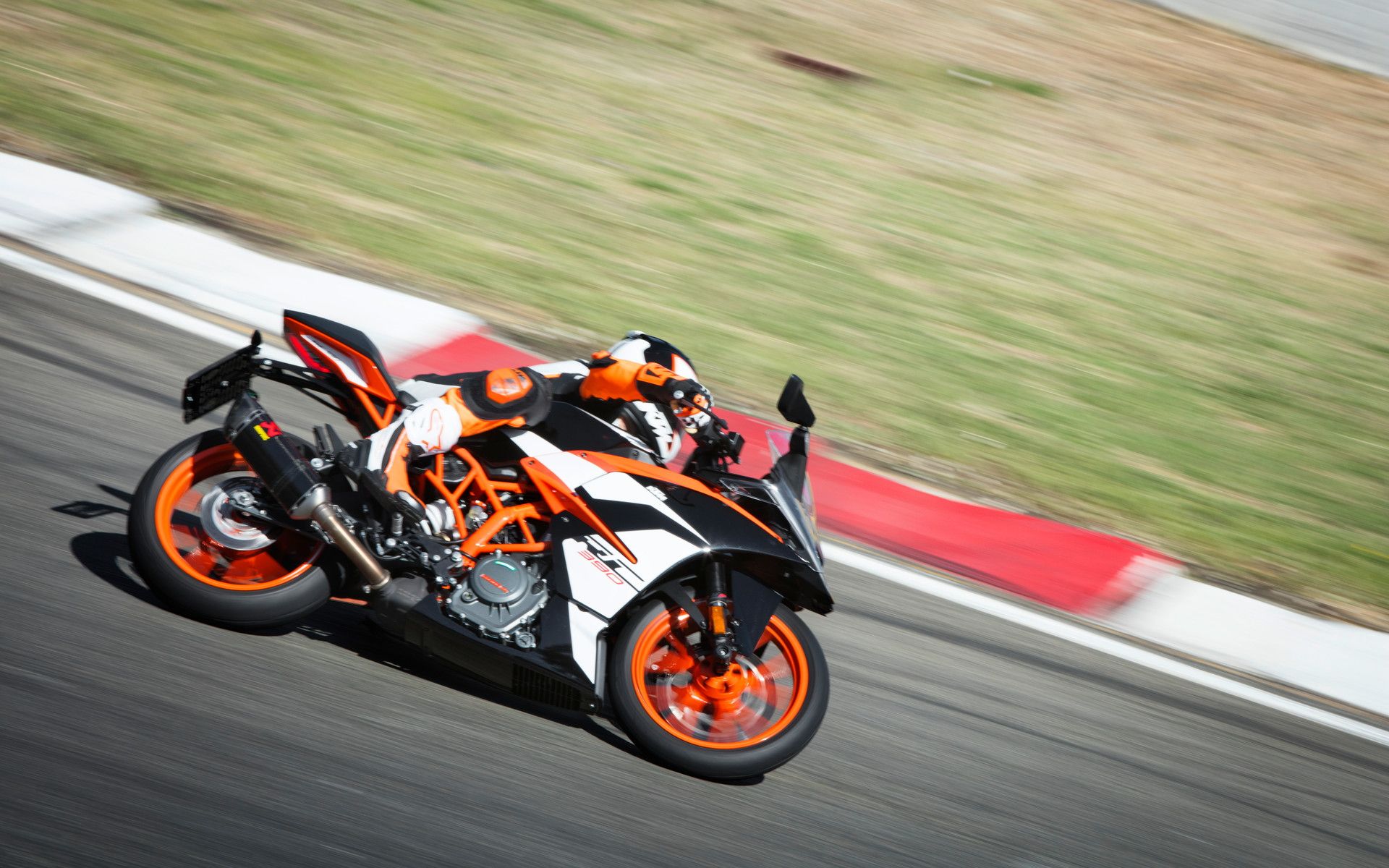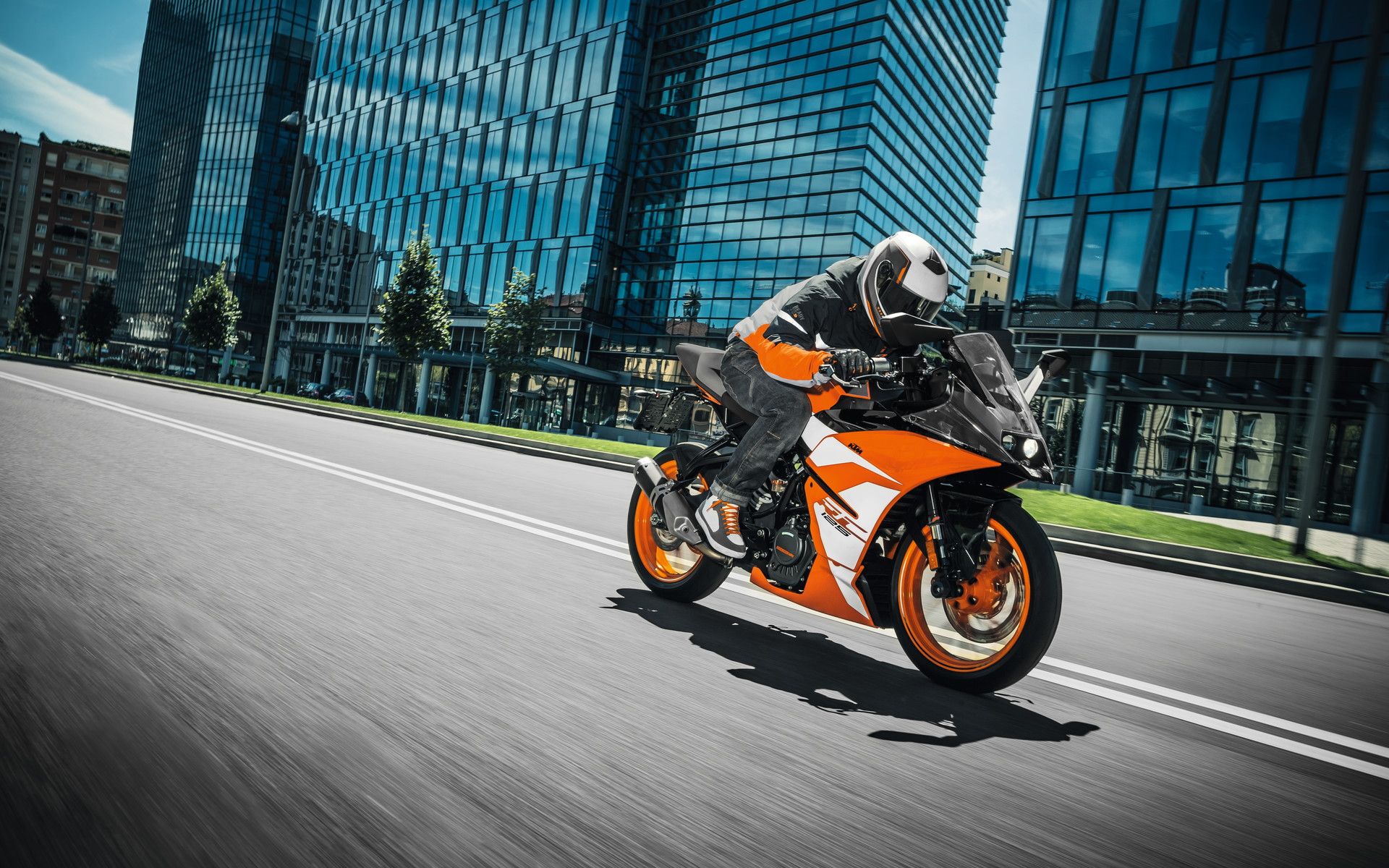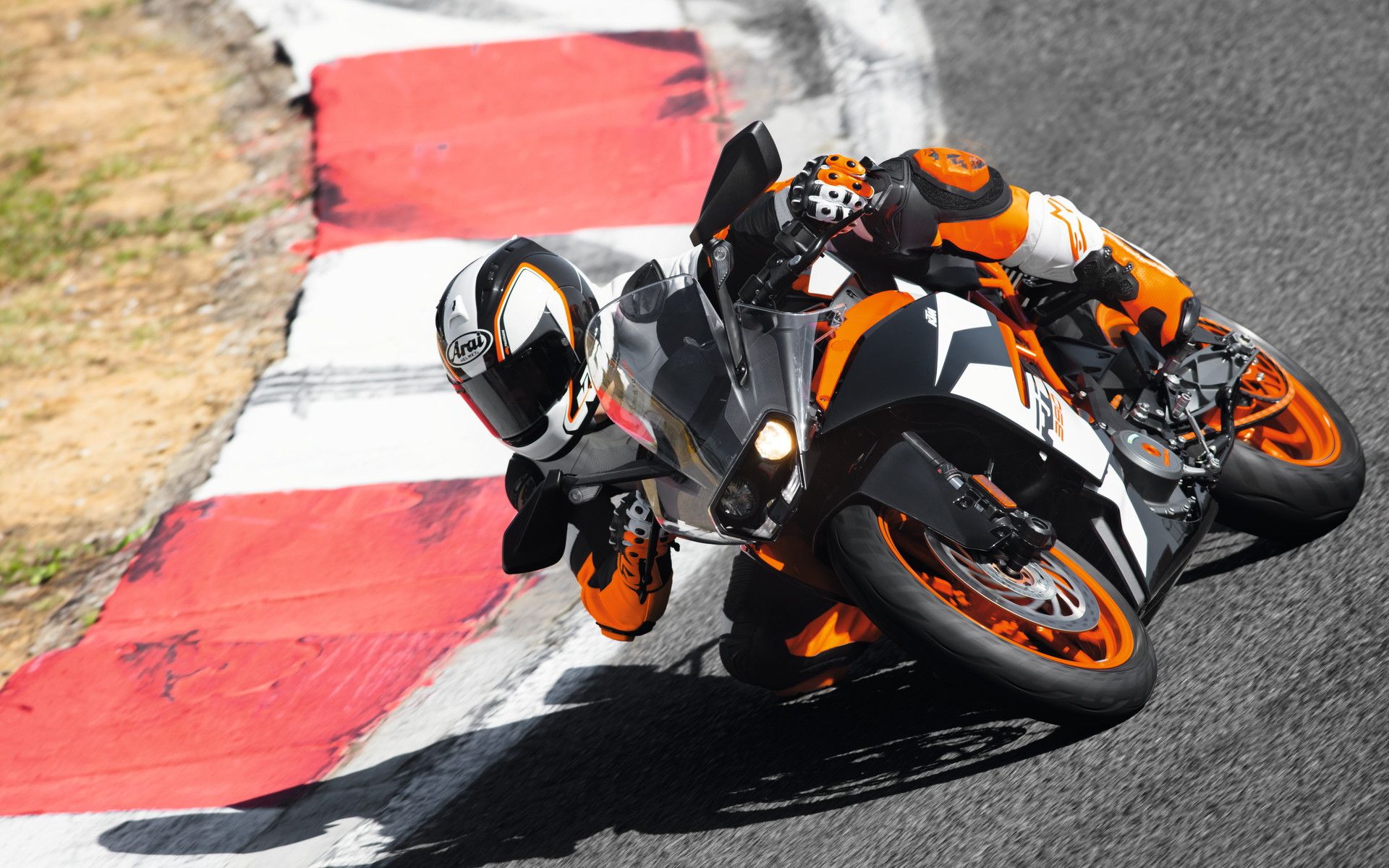KTM's RC 390 saw a major revamp ahead of MY2017, and the Austrian giant carries that revised model through into 2020 as the smallest starter-super to be offered in the U.S. market. Don't be fooled by the small displacement; this is a proper racebike trainer with all the handling performance you'd expect from larger machines.
2017 - 2020 KTM RC 390
- Make: Array
- Model: 2017 - 2020 KTM RC 390
- Engine/Motor: single cylinder
- [do not use] Vehicle Model: Array
KTM RC 390 Design
The factory kept to the essentials when it laid out the new RC 390. Dual headlights lead the way from their recesses at the entry of the front fairing. The fairing itself is rather unusual as the upper half is transparent because it's actually an extension of the bubble screen. The wind-tunnel-tested treatment continues into the cowling that forms a proper scoop and covers all the way down to the belly pan.
A close-fit front fender has broad upright supports that double as deflectors to keep the inner tubes of the inverted forks clean and clear of grit and debris. A flat spot in the middle of the cowling edges kinda extends the cowling forward a bit, and that has the effect of crowding the front end to give the RC 390 an all-up-front look. Of course, the profile has that pronounced pointed protrusion shifting even more of the visual weight forward and gives the machine that racing panache.
To help keep the front end clean, and no doubt to make it easy to strip down for track days, the factory integrated the turn signals with the mirror uprights. KTM sticks with a good ol' LCD screen to deliver the pertinent metrics with a handful of LED indicator lights to wrap up the instrumentation. In addition to the usual goodies, the RC 390 copies the proper supersport racebikes with a shift indicator that tells you when to shift, but instead of it being geared for optimal mileage, it's set up for maximum acceleration.
Individual handlebars screw directly into the upper tripletree for a dead-short, clip-on-style hand control area that pulls the rider forward over the 2.6 gallon fuel tank and into that race-typical Superman riding posture. If you have small hands, you can get an adjustable layout in both the brake and clutch levers from the Powerparts options for some relief.
An upswept subframe lofts the p-pad touted as “more comfortable” than the previous version, though when it comes to KTM, “seat comfort” is a relative statement. Just sayin'. The tank hump and elevated pillion creates a deep swale for the pilot's seat that rests at 32.2 inches off the deck and pulls you down into the bike for positive man-machine integration.
In the rear, a simple mudguard mounts the rear blinkers and tag – again, probably so they can be removed as a unit ahead of race day – and the taillight rides up under the tip of the tail out of harm's way. One of the changes in appearance is the muffler that rides at a sporty angle along the right side of the bike to replace the old under-belly style.
If you're across the pond, you'll be pleased to note the A2-compliant power delivery that makes the RC 390 a good first-upgrade buy for riders who are working their way up through the licensing tiers. No matter where you are, if you're an aspiring racer, the RC 390 is a good step to hit during your training progression, and if you're just into street-legal, race-style bikes, it's good for that, as well.
KTM RC 390 Chassis
Powder-coated steel tubing gives the Trellis frame its strength on the RC 390, and though you can't really see it behind the cowling, the engine is used as a stressed member to complete the structure and lend it its stiffness. The steering head is relatively short at 23.5 degrees from the vertical, and this contributes to the great agility this bike delivers. Of course, the 324-pound dry weight plays a large part in the handling as well to push this machine well into knee-dragging territory.
WP suspension products buoy both front and rear with 43 mm usd forks up front opposite a coil-over monoshock. It looks like they come sans adjustments with fixed damping and preload values, which is unusual for an actual racebike, but fairly common on low-displacement rides, as is the suspension travel at 4.9 inches up front and 5.9 inches in the rear.
A single 320 mm disc – up from 300 mm -- and four-piston caliper slows the front wheel with a 230 mm disc and single-pot binder out back. It comes with the Bosch 9MB two-channel ABS feature that lets you get the most out of the anchors.
Cast-alloy rims mount the rubbers with a five Y-spoke construction designed to keep unsprung weight down along with the windage. That last point is rather important given the light weight of the thing, and it contributes to tracking stability in a crosswind and when dealing with the pressure wave ahead of the cages around you.
|
Frame: |
Steel trellis frame, powder coated |
|
Front Suspension: |
WP upside-down Ø 43 mm |
|
Rear Suspension: |
WP monoshock |
|
Suspension Travel, Front/Rear: |
4.9 in / 5.9 in (125 mm / 150 mm) |
|
Steering Head Angle: |
66.5° |
|
Front Brake: |
320 mm disc, four-piston radial fixed caliper, brake disc |
|
Rear Brake: |
230 mm disc, single-piston floating caliper, brake disc |
|
ABS: |
Bosch 9MB two-channel ABS |
|
Chain: |
X-Ring 5/8 x ¼" |
KTM RC 390 Drivetrain
Yeah, it's a KTM, so it should be entirely unsurprising that the RC 390 comes with a thumper on power-delivery duty. An 89 mm bore and 60 mm stroke give it a total displacement of 373.2 cc with 44 horsepower and 25.8 pound-feet of torque on tap. It all comes under the control of the new ride-by-wire system that reconciles the difference between rider demand and engine capability to deliver smooth power changes through the Bosch Engine Management System.
Dual over-head camshafts time the four-valve head, and this little mill borrows tech from its big brothers with carbon-coated cam followers meant to minimize wear and prolong the service life of the top end. The under-slung exhaust went away in favor of a triple-chamber muffler positioned to minimize its effect on the overall center of gravity. Steps were taken to minimize the extra hardware needed by making the right-side passenger footrests pull double duty as a muffler mount.
What does all this get you? Well, according to the factory you can count on 111 mph at the top end, but naturally, individual results may vary depending on elevation, conditions, how much you had for lunch, et cetera.
|
Engine: |
single-cylinder, 4-stroke engine |
|
Displacement: |
373.2 cc |
|
Power: |
43 hp (32 kW) |
|
Torque: |
25.8 lb-ft (35 Nm) |
|
Bore x Stroke: |
89 mm x 60 mm |
|
Starter: |
Electric starter |
|
Lubrication: |
Semi-dry sump |
|
Transmission: |
6-speed |
|
Cooling: |
Liquid cooled |
|
Clutch: |
PASC™ antihopping clutch, mechanically operated |
|
EMS: |
Bosch EMS with RBW |
KTM RC 390 Pricing
The 2020 RC 390 is available for $5,549 MSRP. It comes in a combination of the usual orange, white, and black livery, and the factory gives you plenty of opportunity to inflate the out-the-door price with a plethora of optional, ex-sale “Power Part” components.
|
Color: |
Black/White/Orange |
|
Price: |
$5,549 |
KTM RC 390 Competitors
No doubt about it, the low-displacement crotch-rocket market is hot right now, and there is no shortage of likely competitors for the RC 390, especially in the Asian sector. So, with that in mind, I went with Yamaha's popular YZF-R3 to see how the Austrian stacks up.
Yamaha YZF-R3
Yamaha keeps to convention with full body coverage and a scoop that is a little high and tight to expose more of the front end and leave an unobstructed view of the front wheel and fender. Too bad Yammy failed to be clever with the front blinkers and integrate them with the mirrors, because not only do the stubby signals look like an afterthought, they are terribly vulnerable in a laydown. That said, the rest of the YZF's front end is both clean and sharp with newly-designed bodywork and a sleek new look.
A bubble screen, dead-short handlebars, and digital instrumentation hits many of the same design high points as the KTM, and is perhaps even more conventional in its looks. That's not necessarily a strike against the Yamaha, just a statement of fact.
Inverted forks lead the way with fixed values, just like the RC 390, but in the rear, the monoshock has a variable preload feature that's a cut above the KTM. ABS is optional, and if I'm honest, I'll admit that I prefer an ABS that's switchable so you have a choice in the matter post-sale, and can go either way depending on conditions and mood. No giggity.
Yamaha runs a 321 cc parallel-twin engine and claims a top speed of 117 mph, and while that's a skosh faster than the KTM, you're not liable to notice much of a difference, especially on civilized (read: public) streets. Yamaha gets a win at the checkout counter with a $4,999 sticker. You'll have to decide for yourself if the difference in price is worth it to you.
Read our full review of the Yamaha YZF-R3.
He Said
“As a matter of personal taste, I prefer the looks of the Yamaha, but fans of the KTM brand are used to the unique look, and may find my position an arguable point. Looks aside, it's a hell of a machine for what it's built for, which is as a trainer for would-be racers and riders who just like that racebike look and attitude. However, posers beware, because this is no toy, and you need to either have the beginnings of a proper riding skillset, or develop one right quick. It's still a KTM, after all.”
She Said
My wife and fellow motorcycle writer, Allyn Hinton, says, “It's not terribly flickable, but there's plenty of grunt down low. Acceleration is snappy and the brakes feel more than adequate. I feel like the RC 390 is a super commuter and everyday fun bike, and if you have a notion of hitting the track, this could be your everything bike. It handles the interstate with plenty of roll-on at speed, so if your commute takes you more than a couple of exits, you'll be fine.”
KTM RC 390 Specifications
|
Engine & Drivetrain: |
|
|
Engine: |
single-cylinder, 4-stroke engine |
|
Displacement: |
373.2 cc |
|
Power: |
43 hp (32 kW) |
|
Torque: |
25.8 lb-ft (35 Nm) |
|
Bore x Stroke: |
89 mm x 60 mm |
|
Starter: |
Electric starter |
|
Lubrication: |
Semi-dry sump |
|
Transmission: |
6-speed |
|
Cooling: |
Liquid cooled |
|
Clutch: |
PASC™ antihopping clutch, mechanically operated |
|
EMS: |
Bosch EMS with RBW |
|
Chassis: |
|
|
Frame: |
Steel trellis frame, powder coated |
|
Front Suspension: |
WP upside-down Ø 43 mm |
|
Rear Suspension: |
WP monoshock |
|
Suspension Travel, Front/Rear: |
4.9 in / 5.9 in (125 mm / 150 mm) |
|
Steering Head Angle: |
66.5° |
|
Front Brake: |
320 mm disc, four-piston radial fixed caliper, brake disc |
|
Rear Brake: |
230 mm disc, single-piston floating caliper, brake disc |
|
ABS: |
Bosch 9MB two-channel ABS |
|
Chain: |
X-Ring 5/8 x ¼" |
|
Dimension & Capacities: |
|
|
Ground Clearance: |
7 in (178.5 mm) |
|
Seat Height: |
32.3 in (820 mm) |
|
Fuel Capacity (approx.): |
2.6 gals (10 l) |
|
Fuel Consumption: |
66.9 mpg (3.52 l/100 km) |
|
Dry Weight: |
324 lbs (147 kg) |
|
Top Speed: |
111 mph |
|
Details: |
|
|
Color: |
Black/White/Orange |
|
Price: |
$5,549 |
Further Reading
KTM
|
Read more KTM news. |


